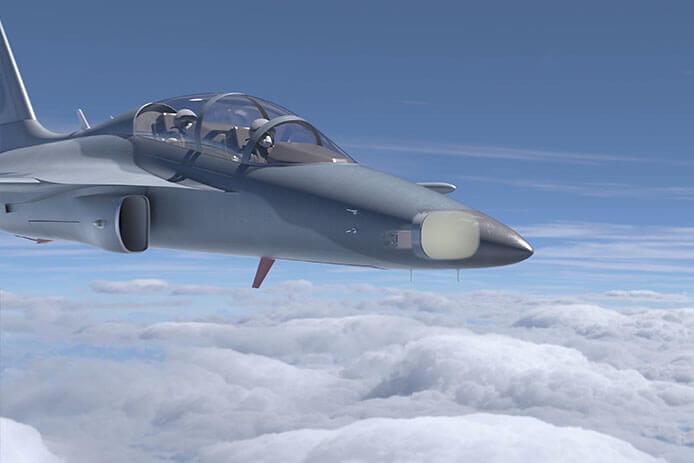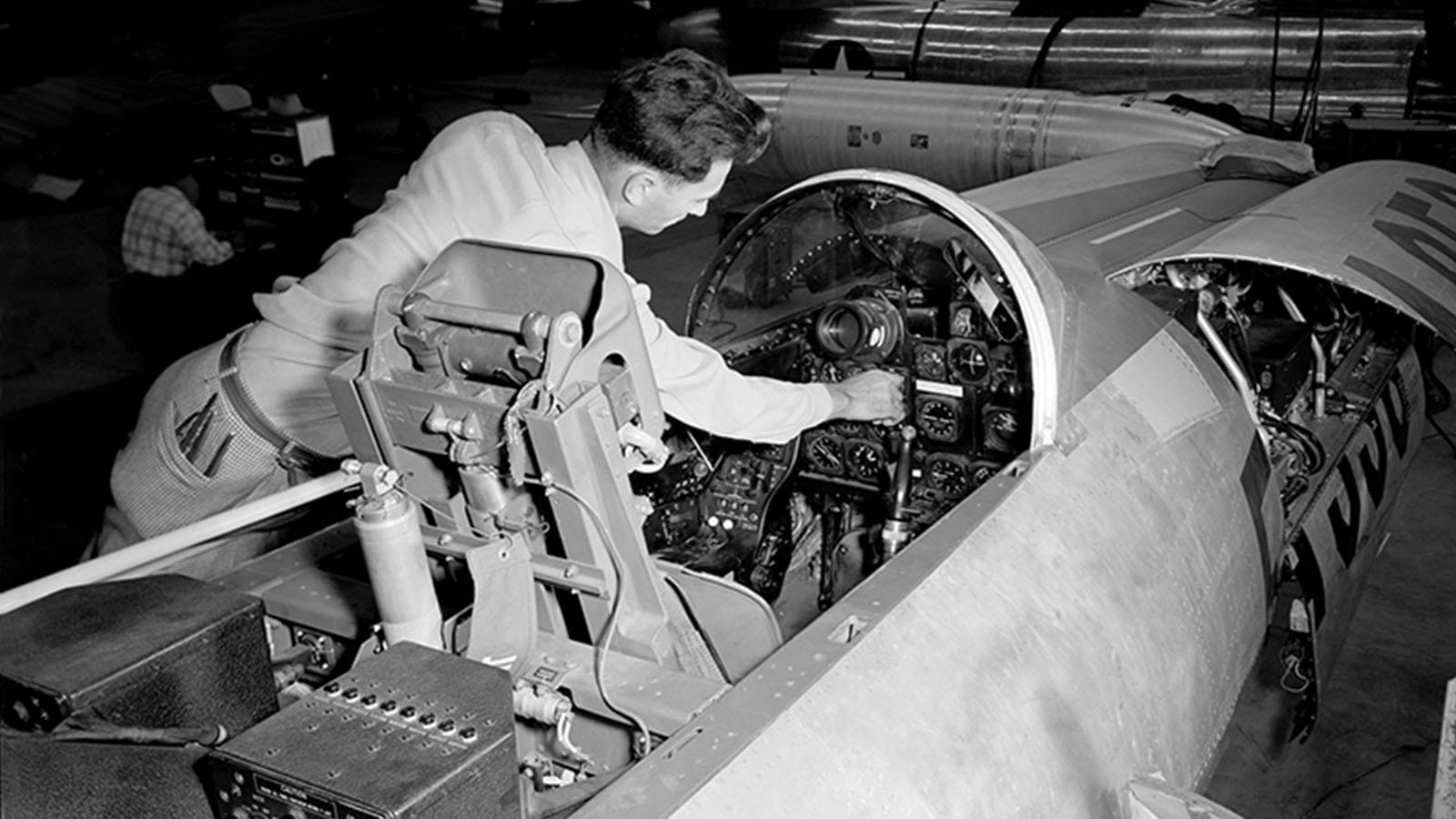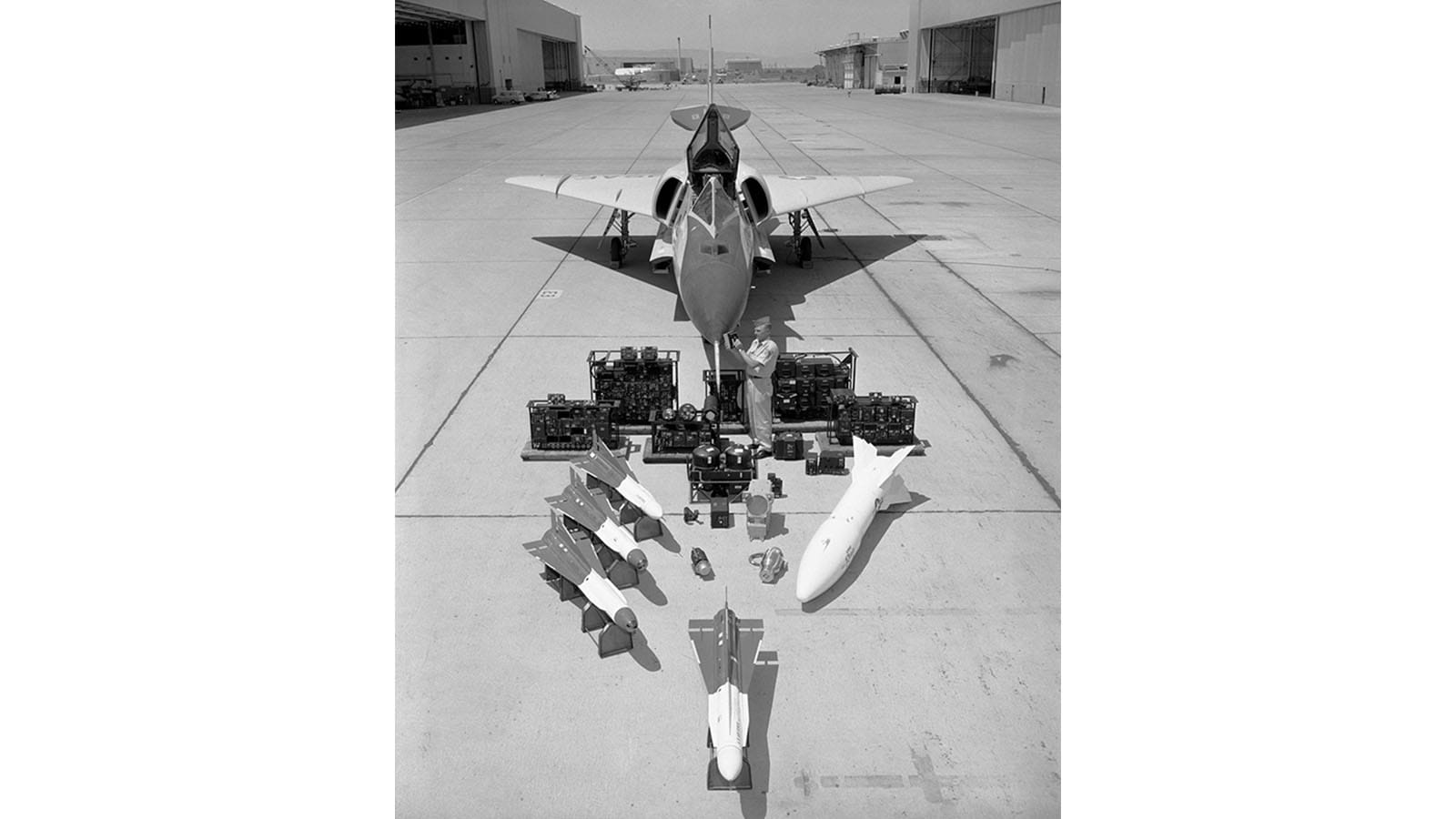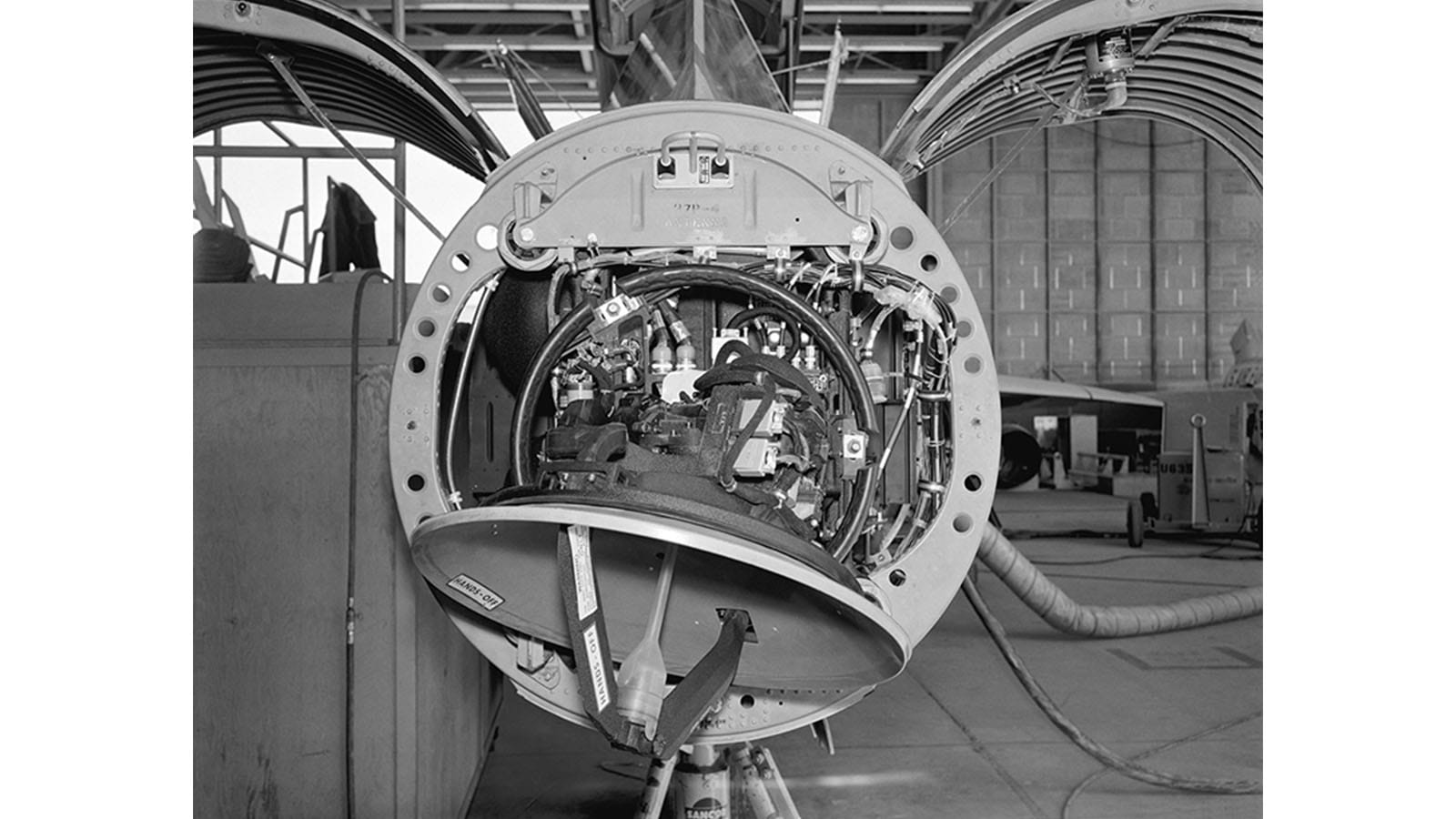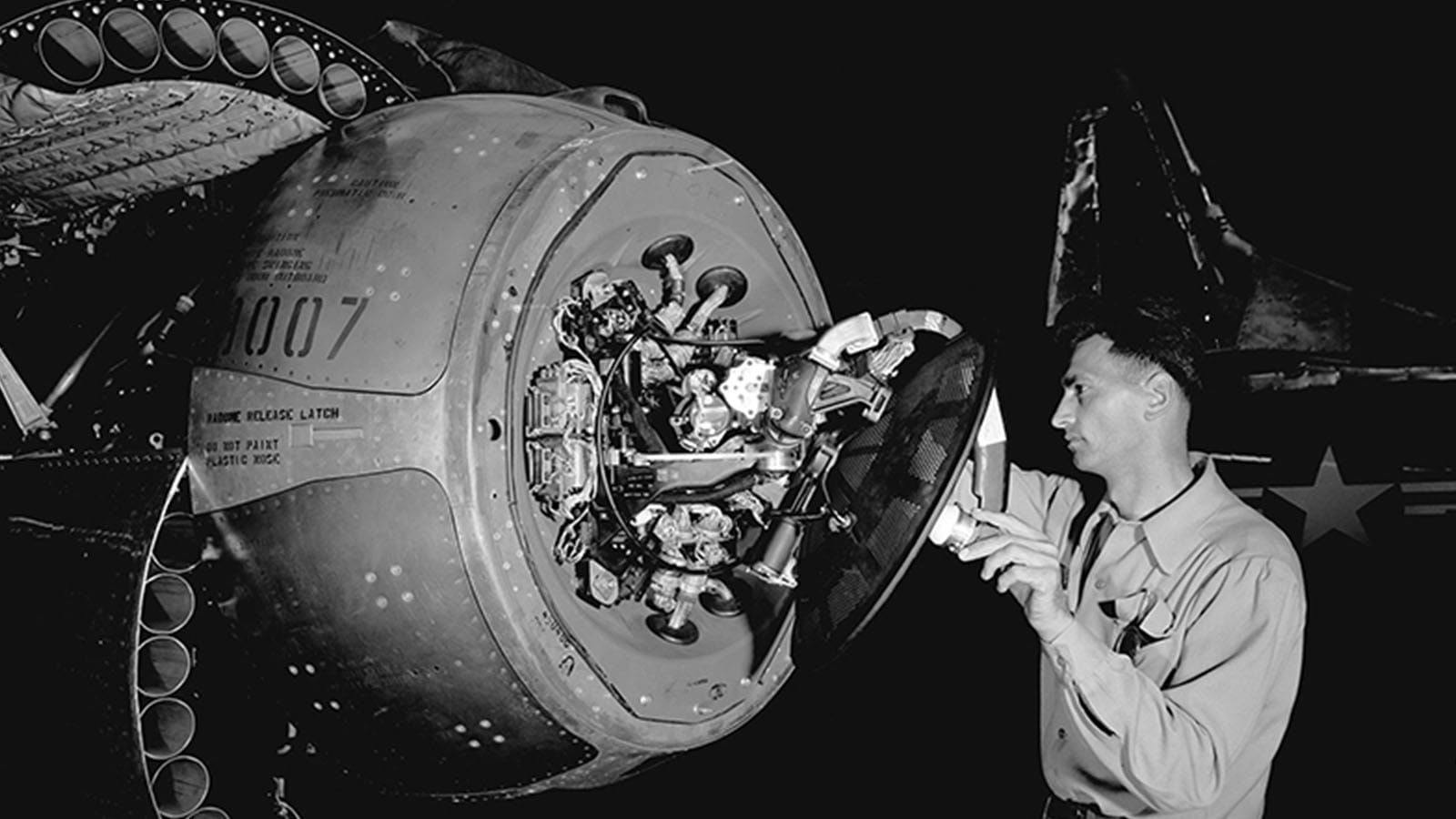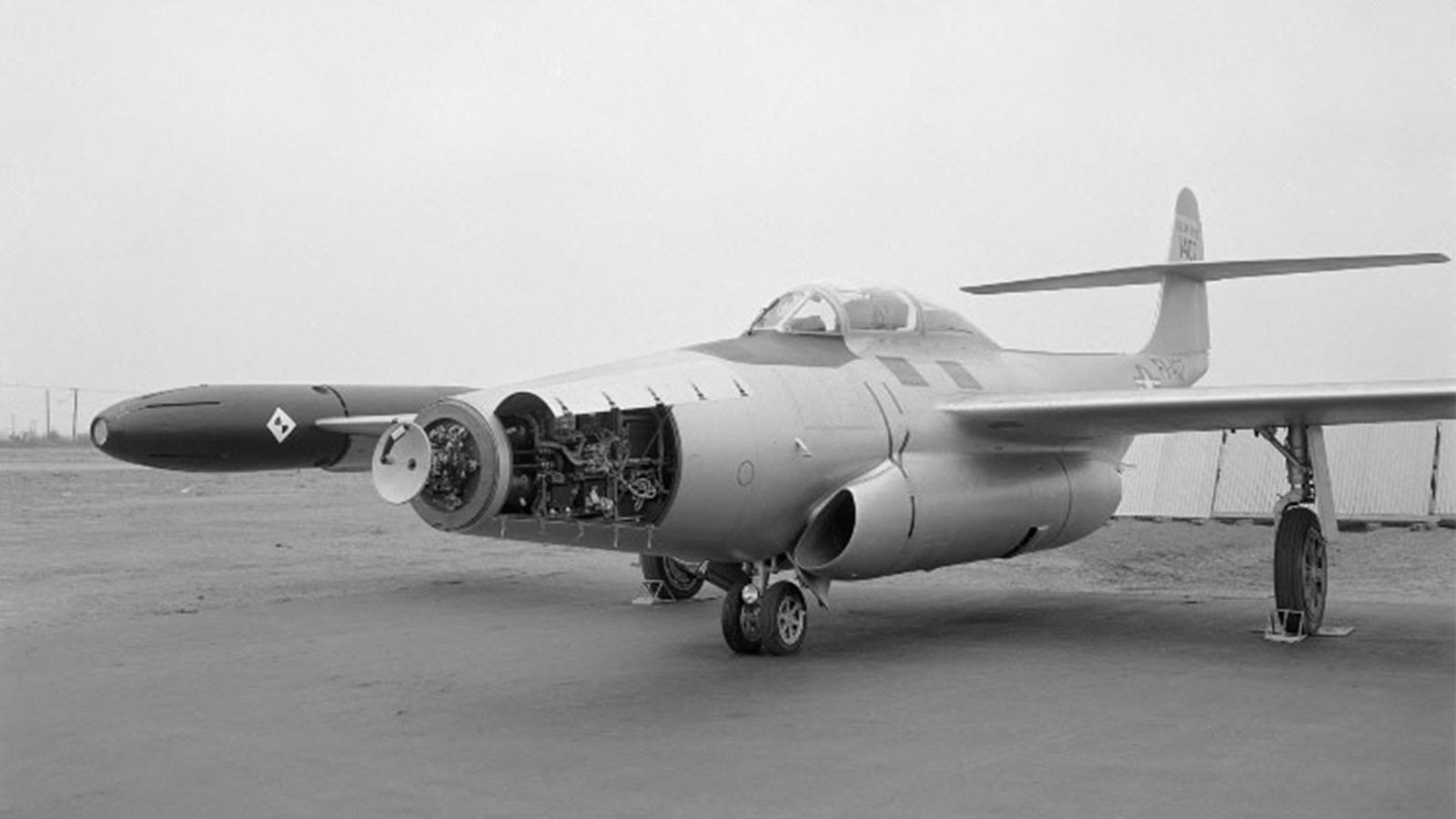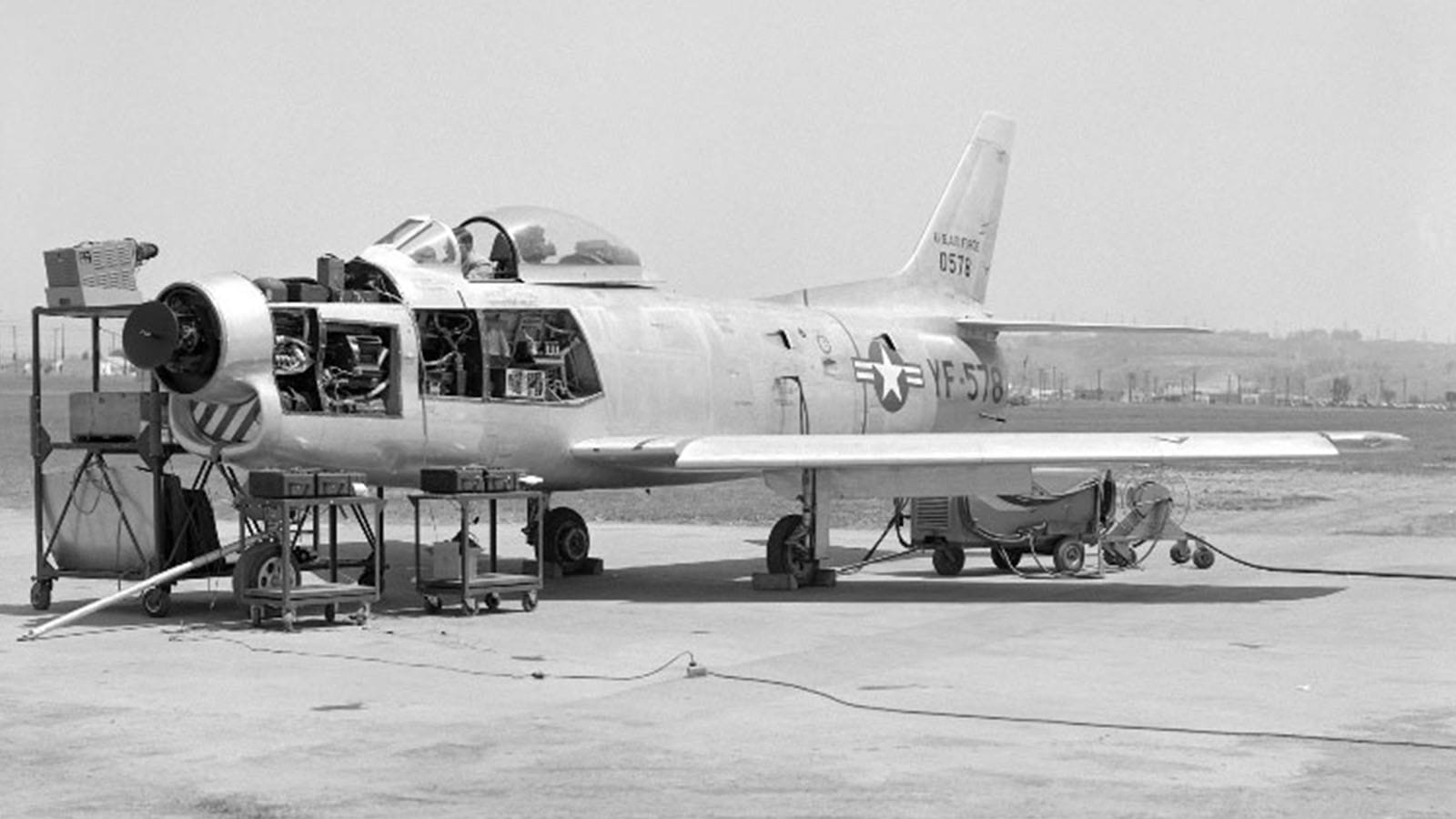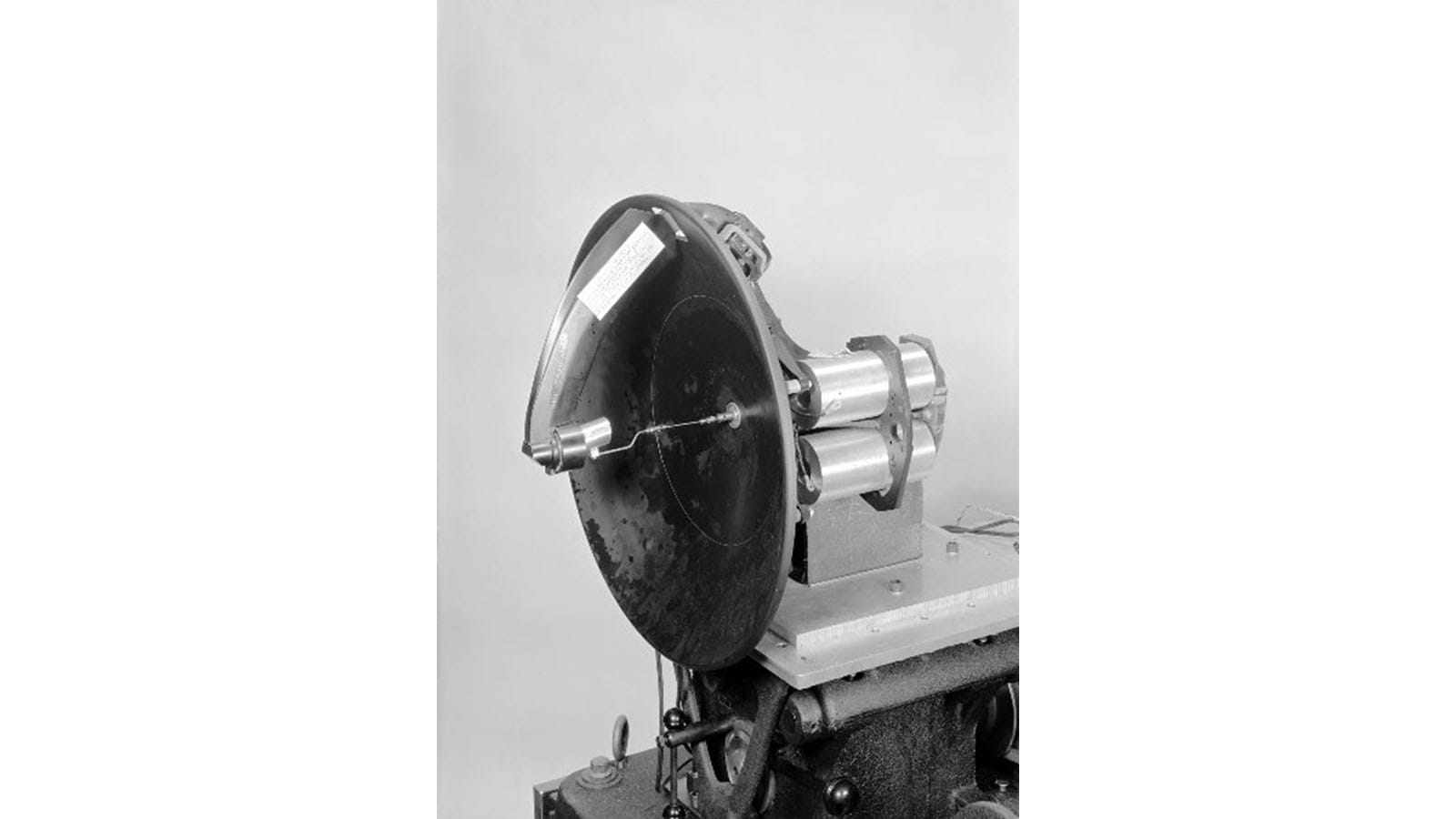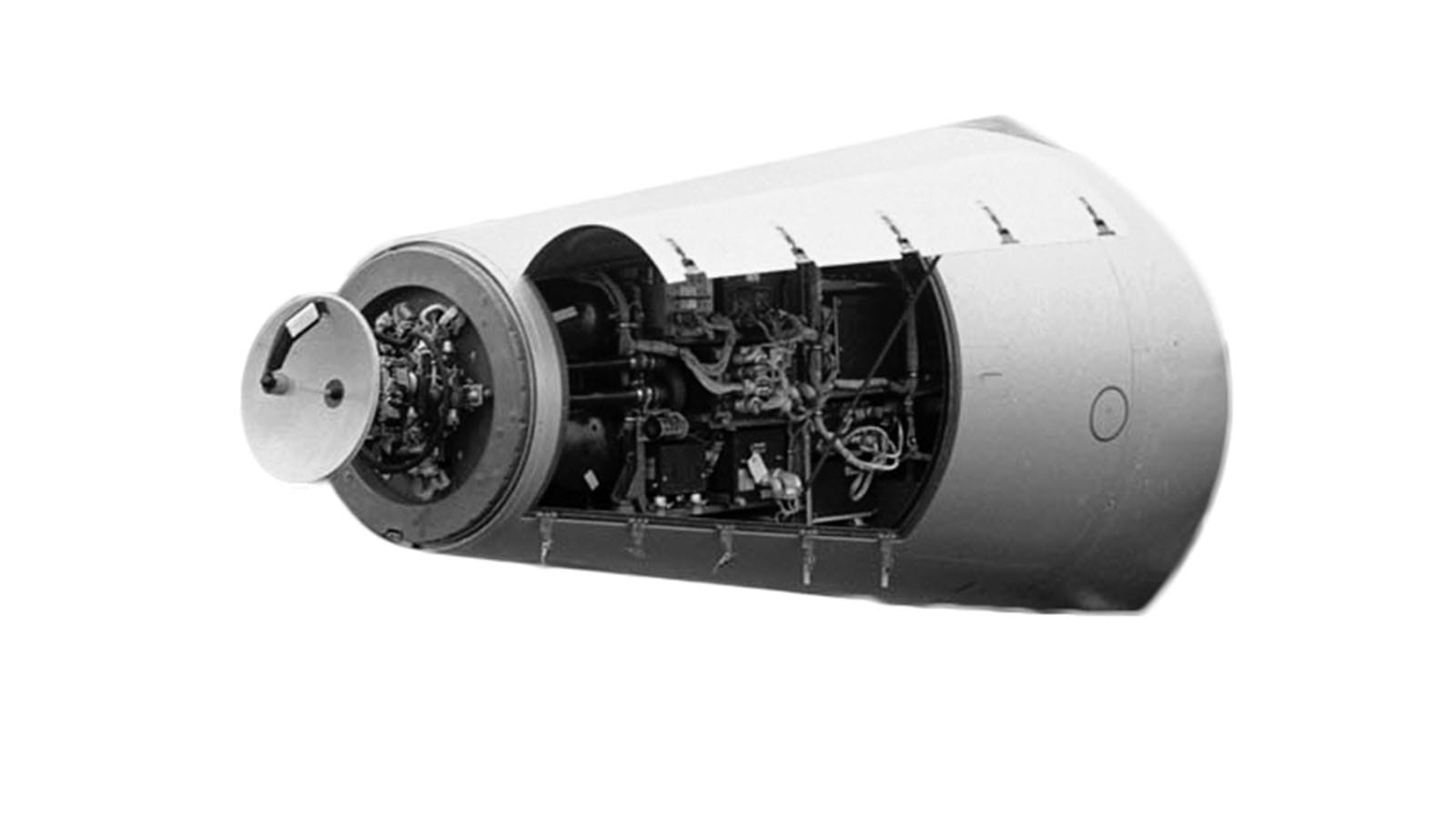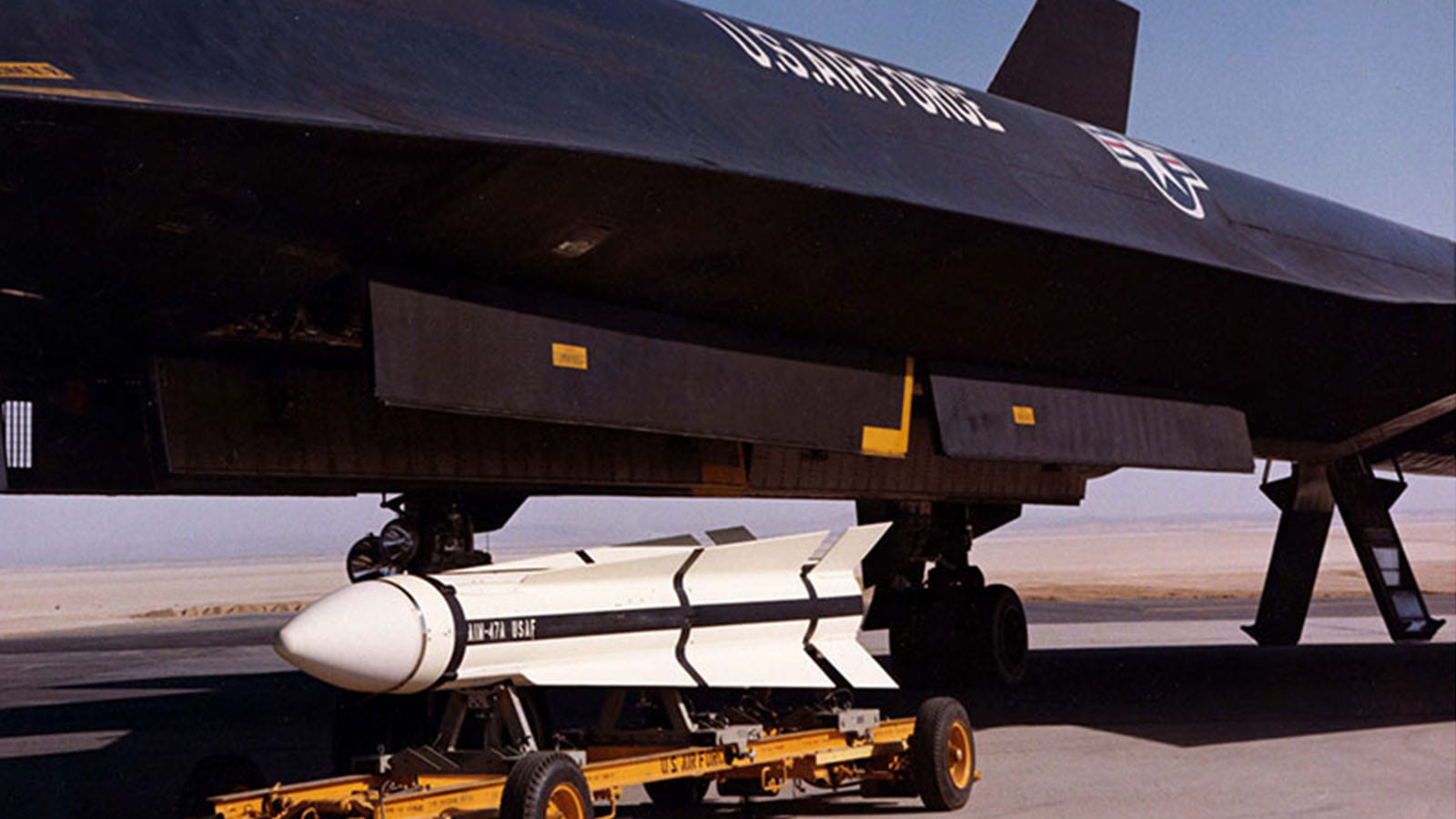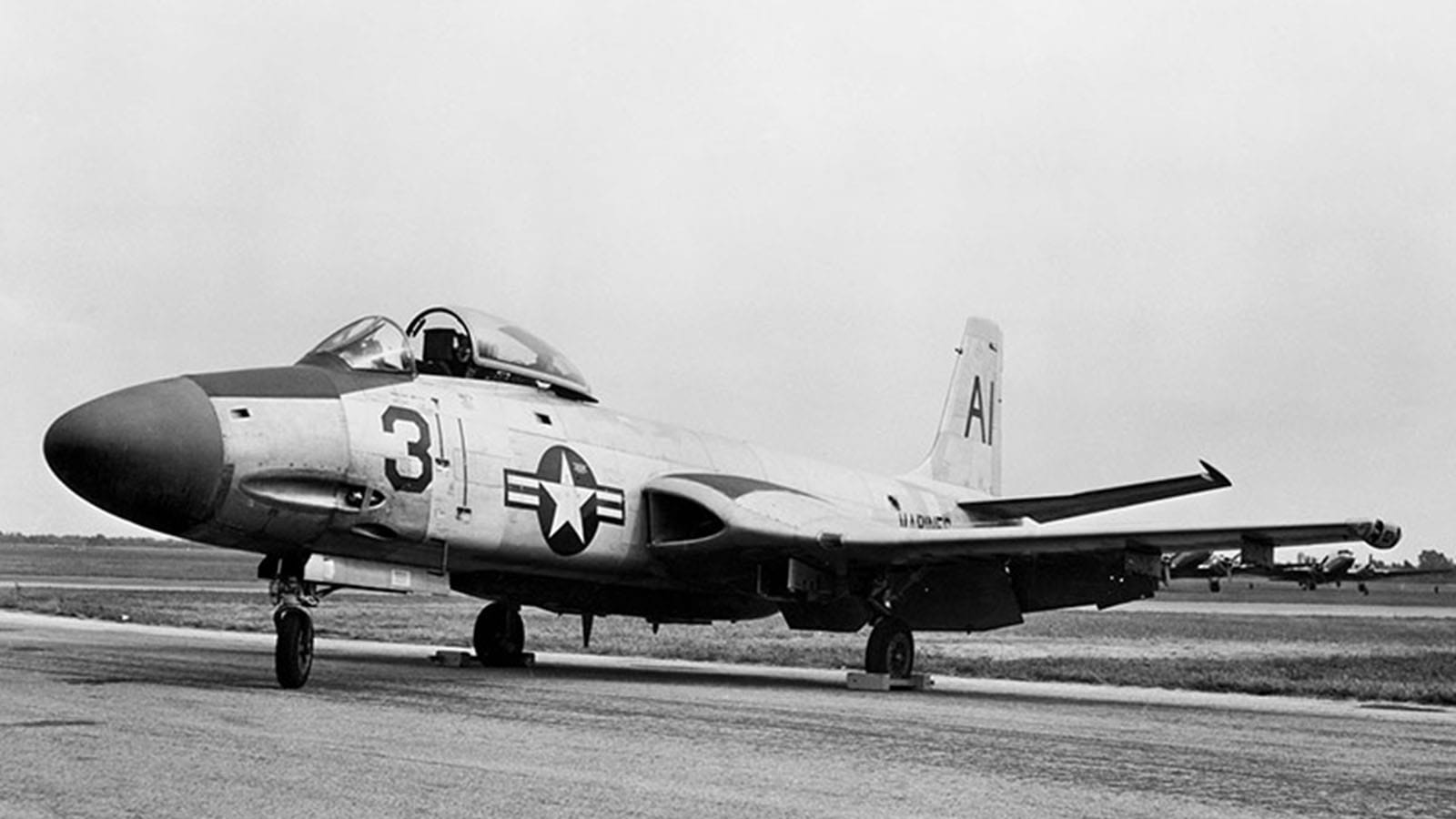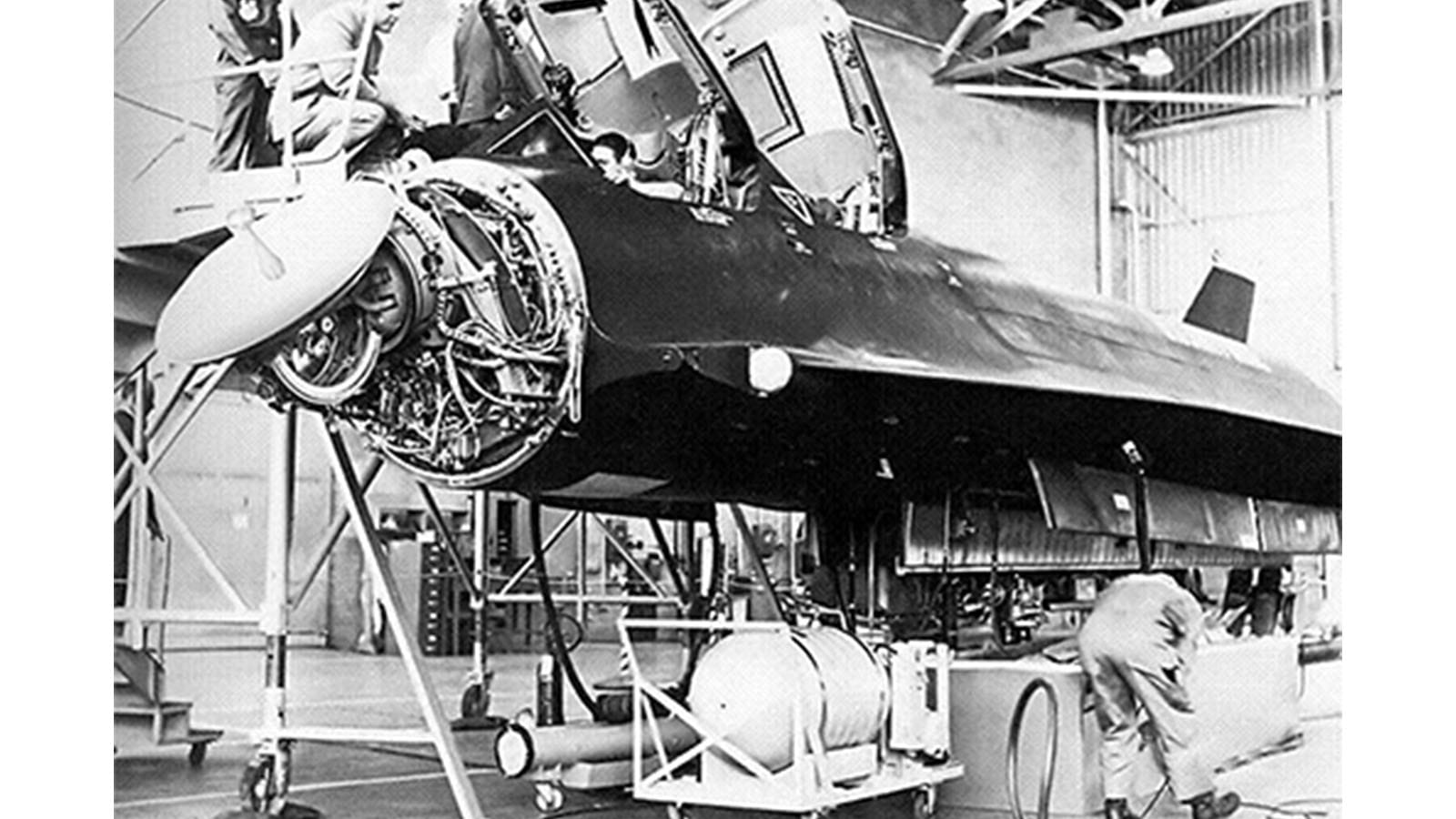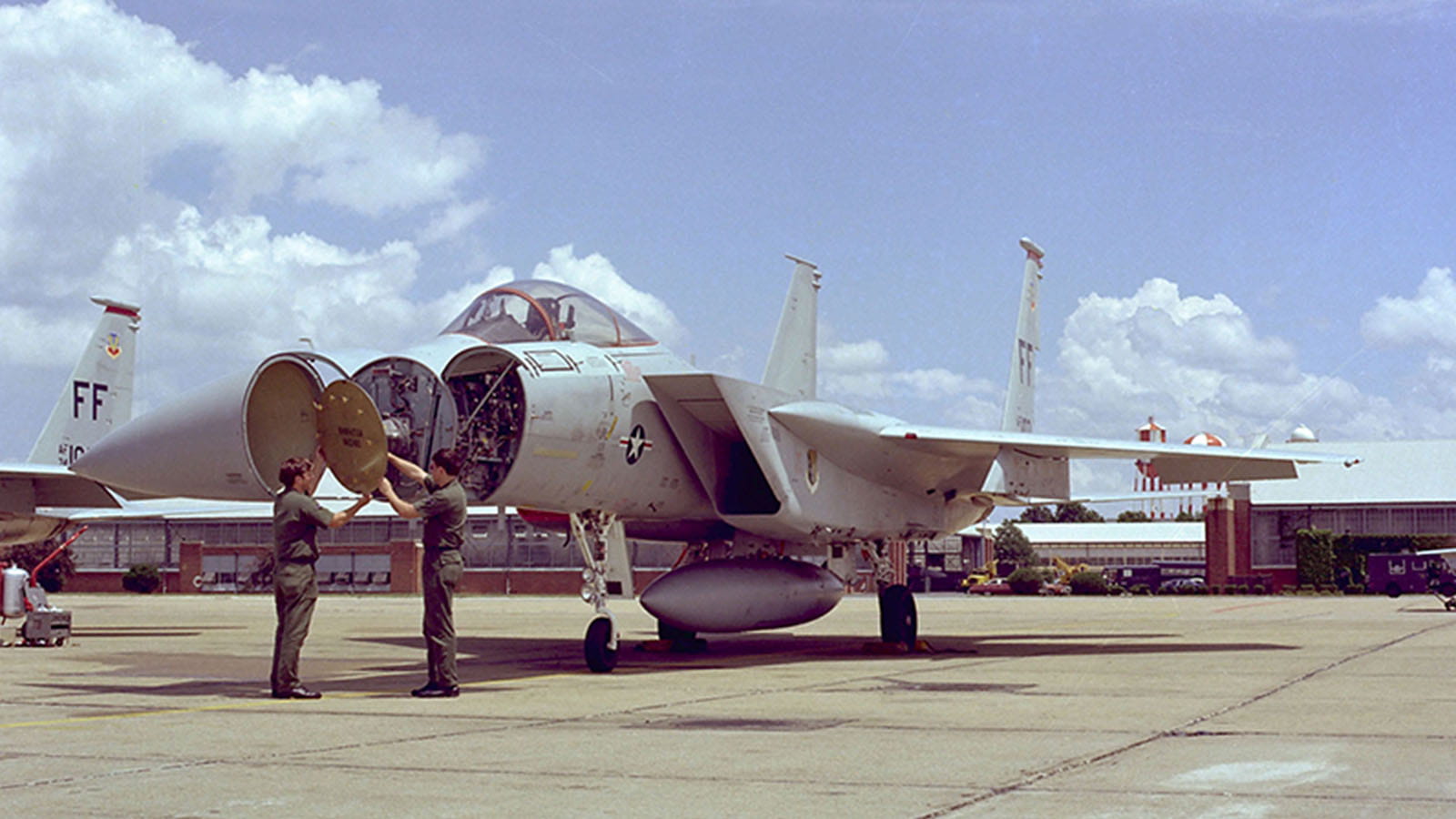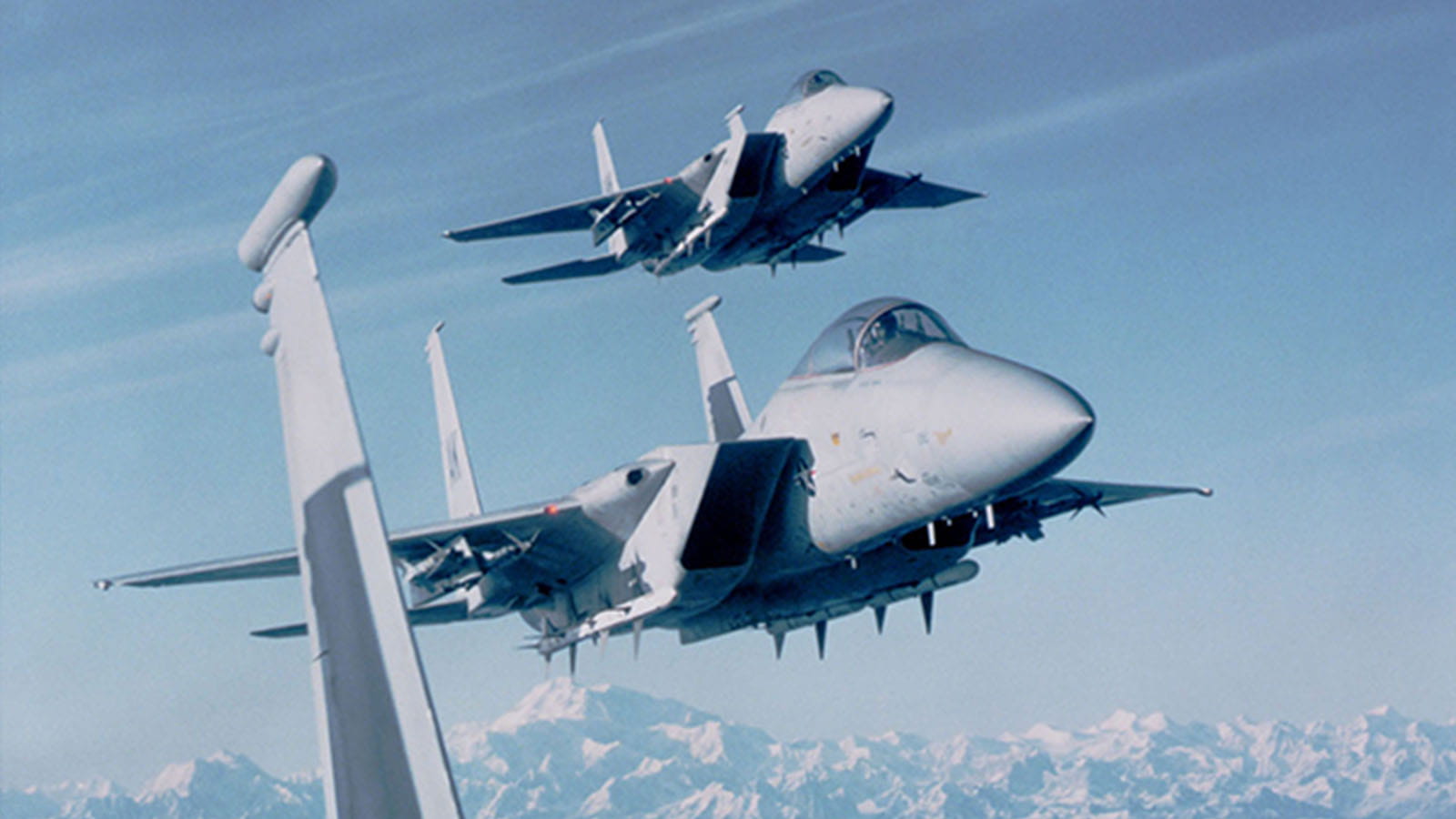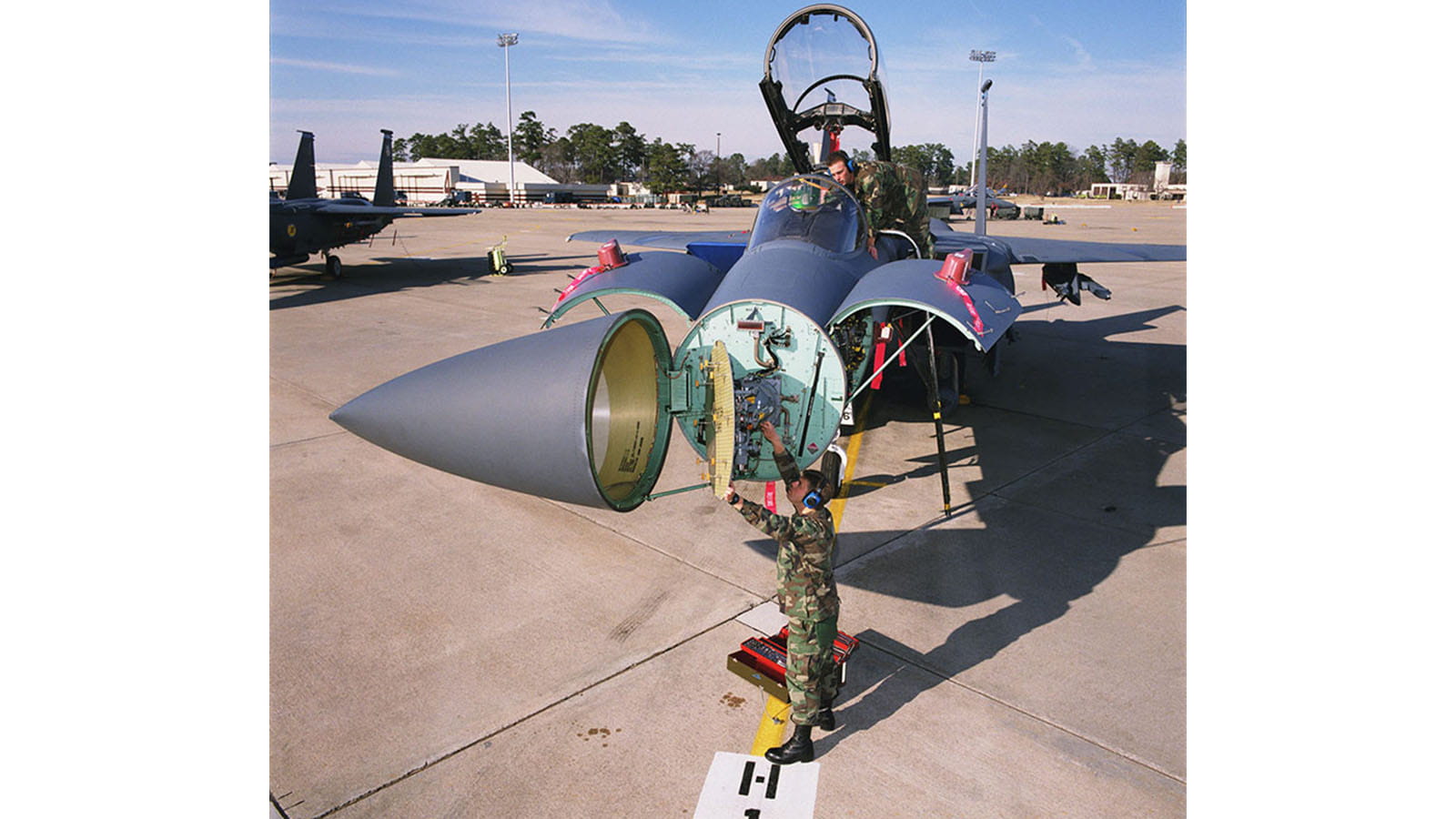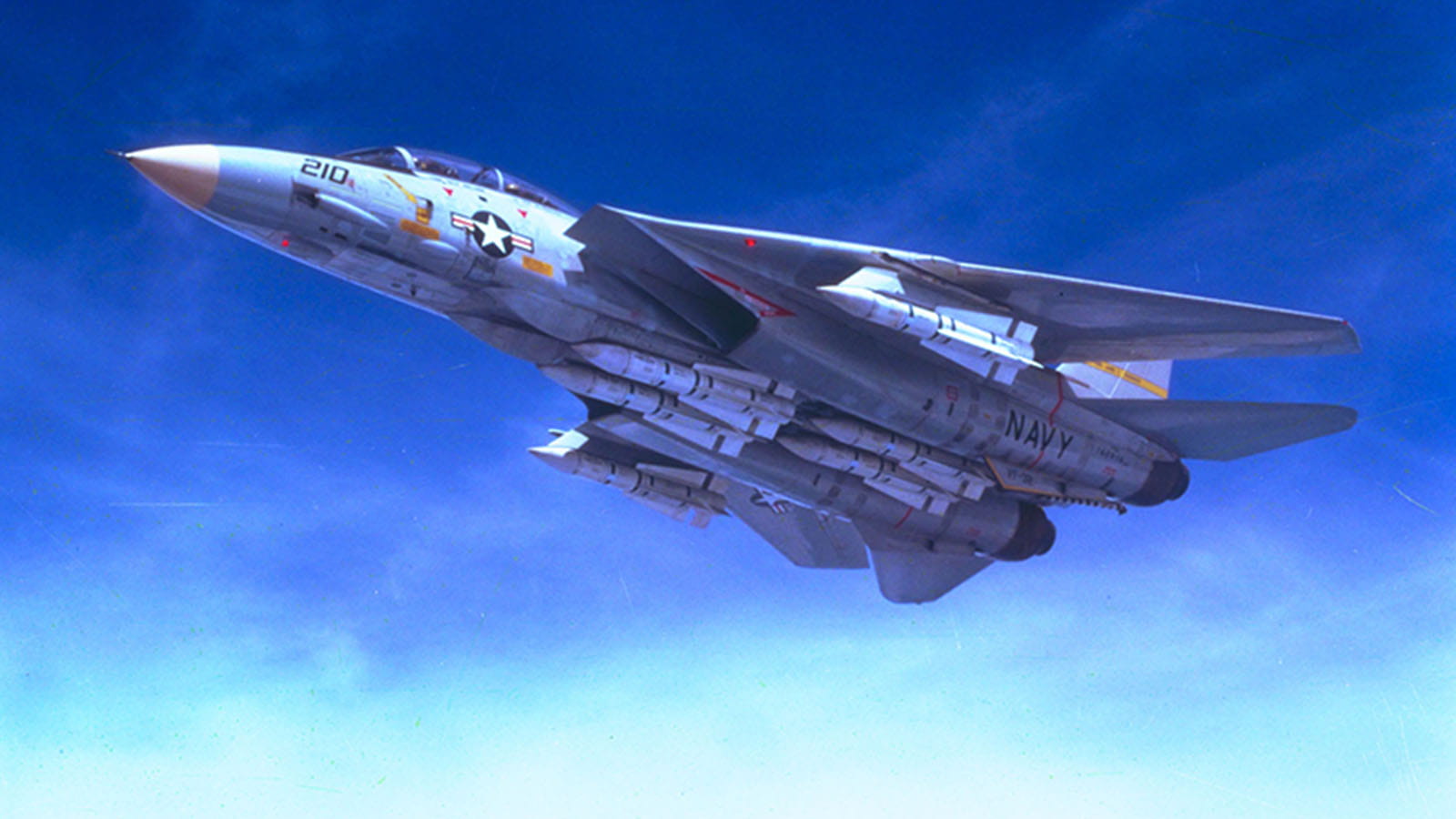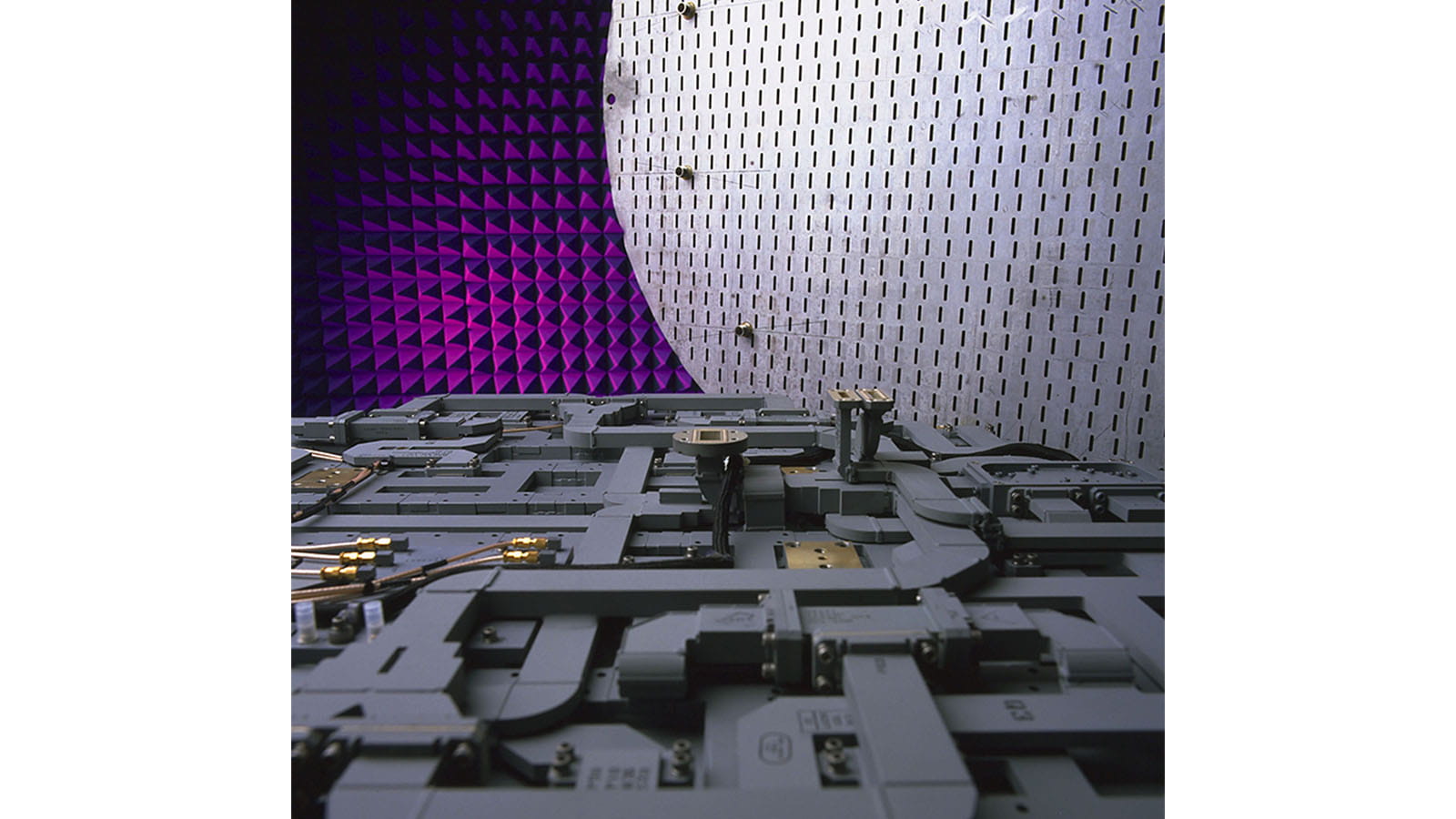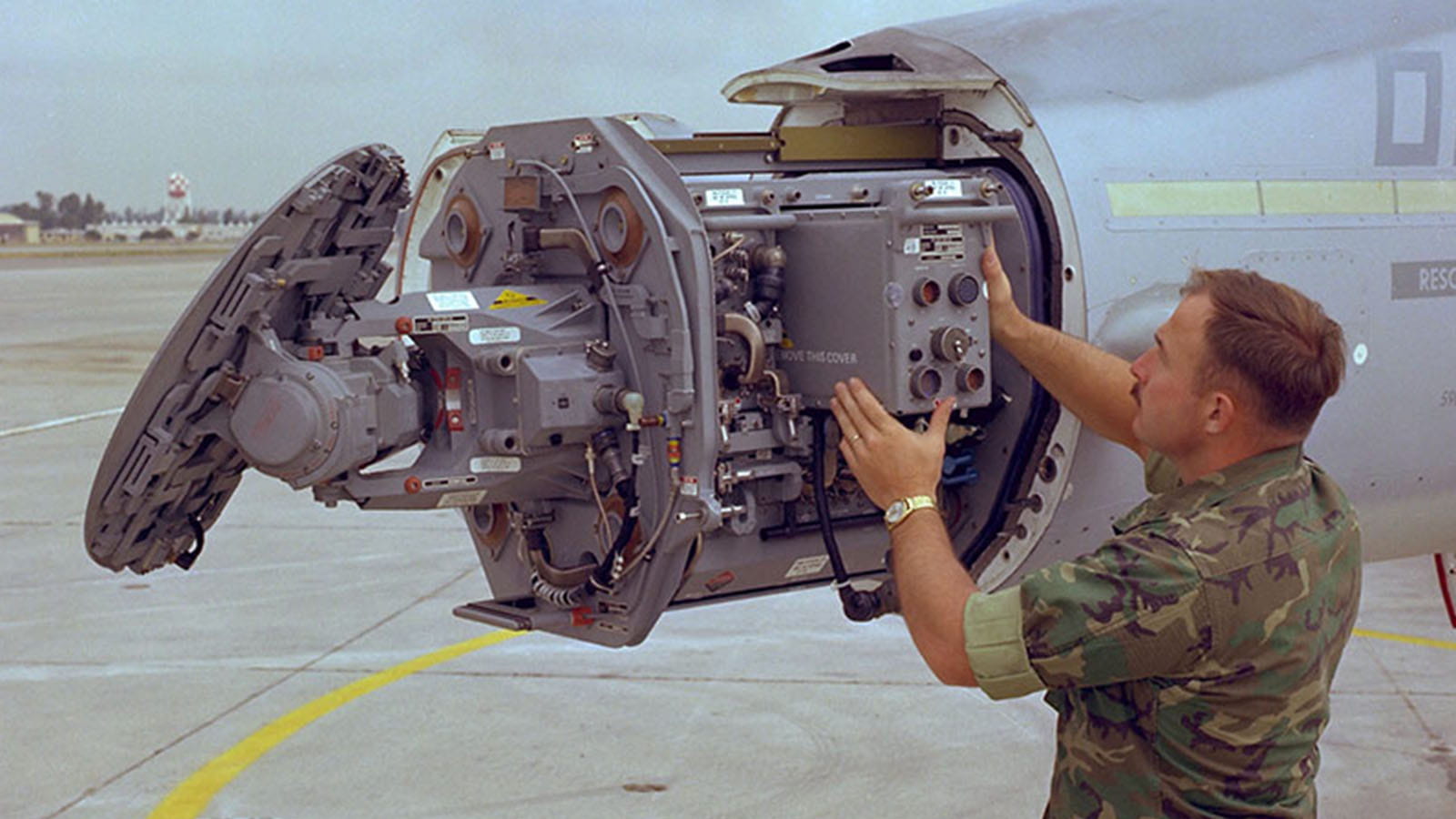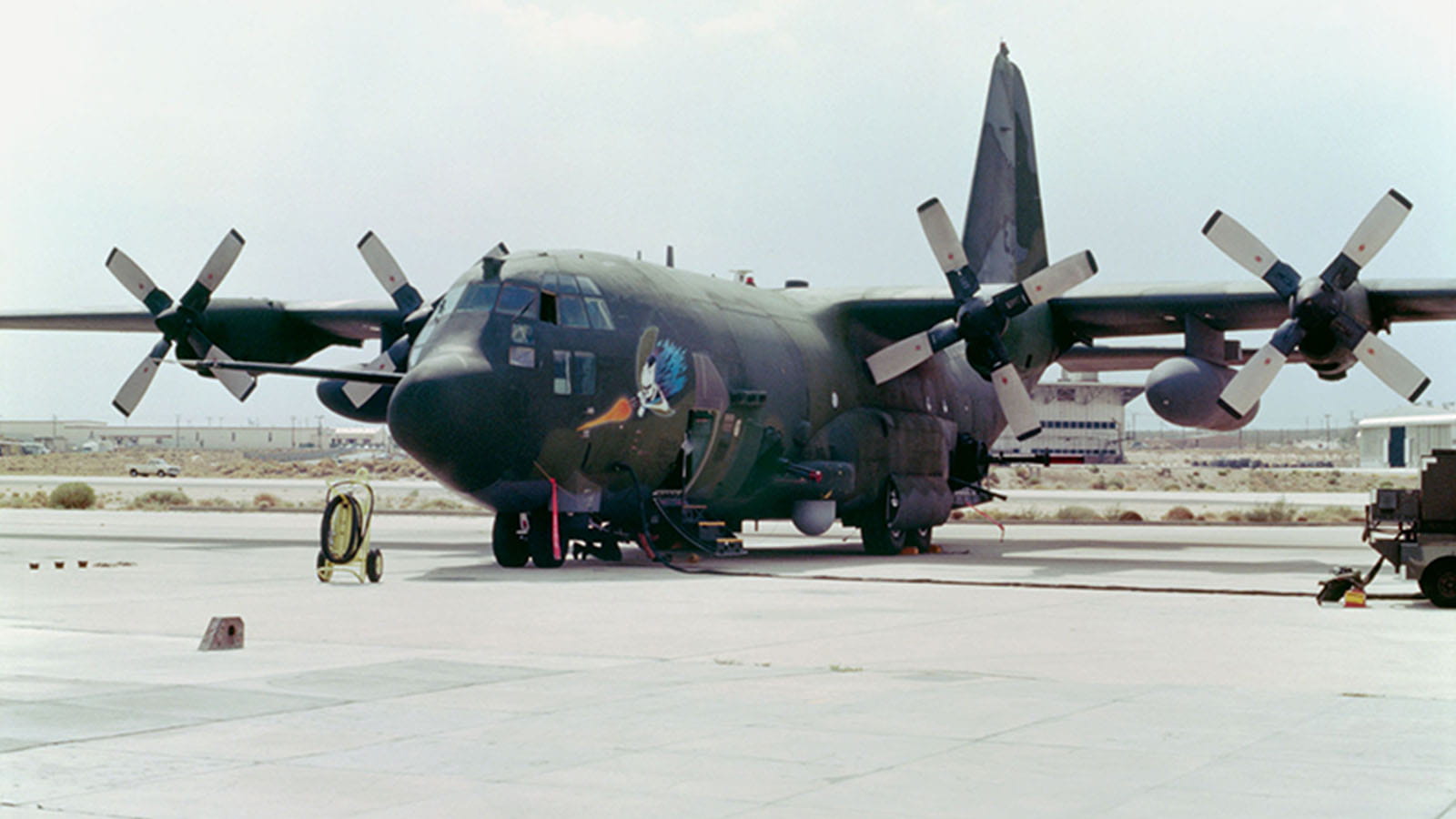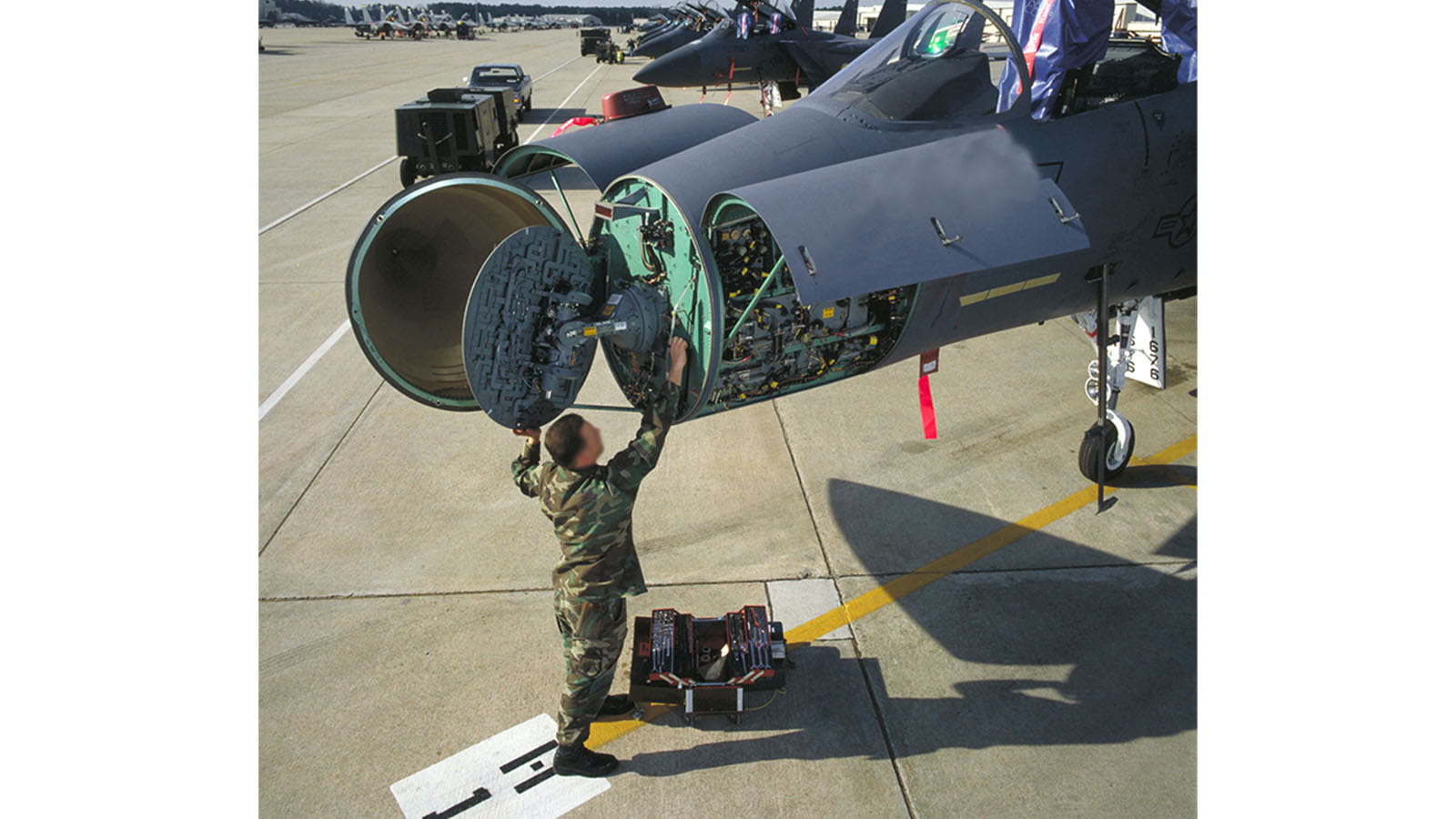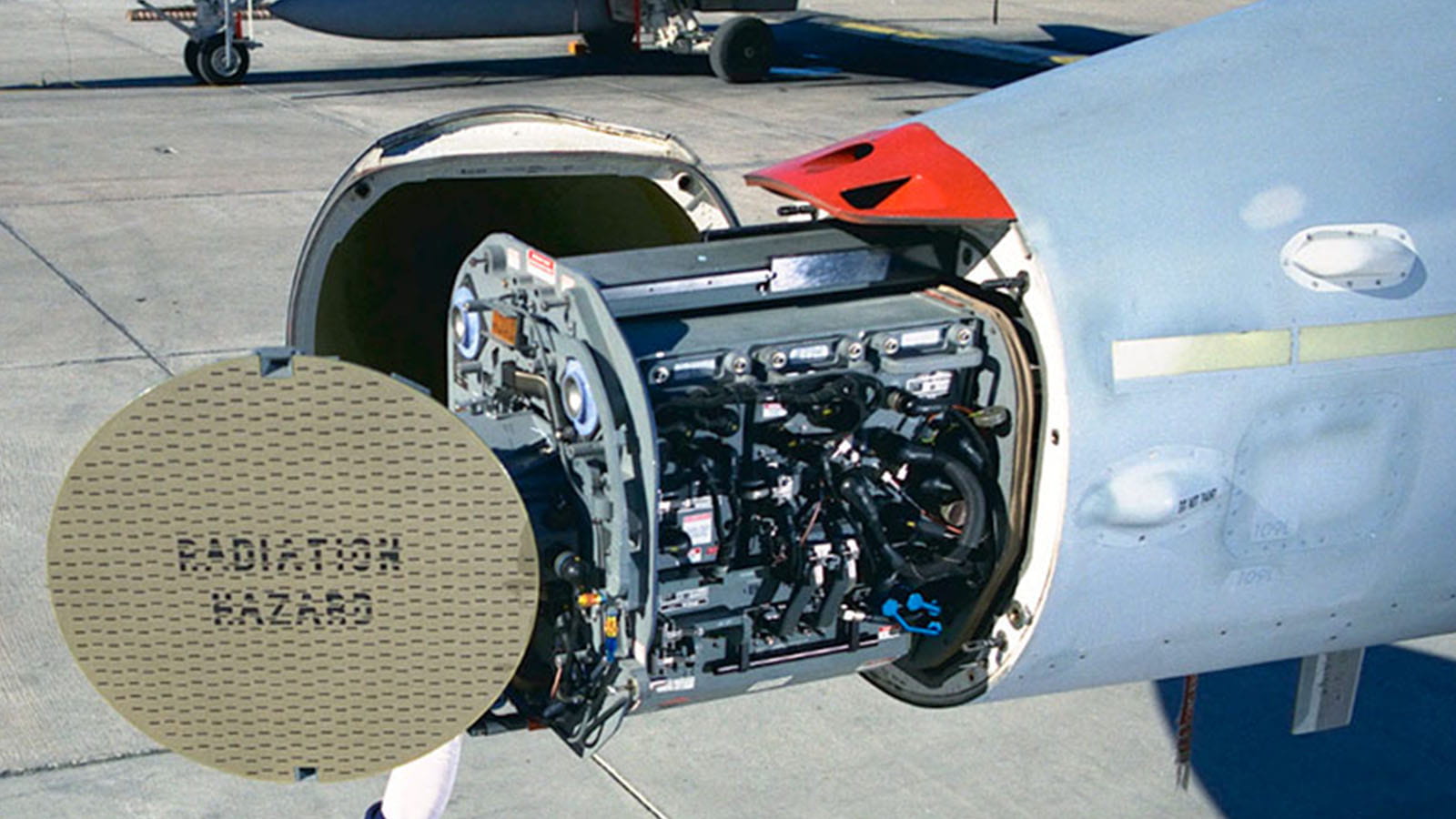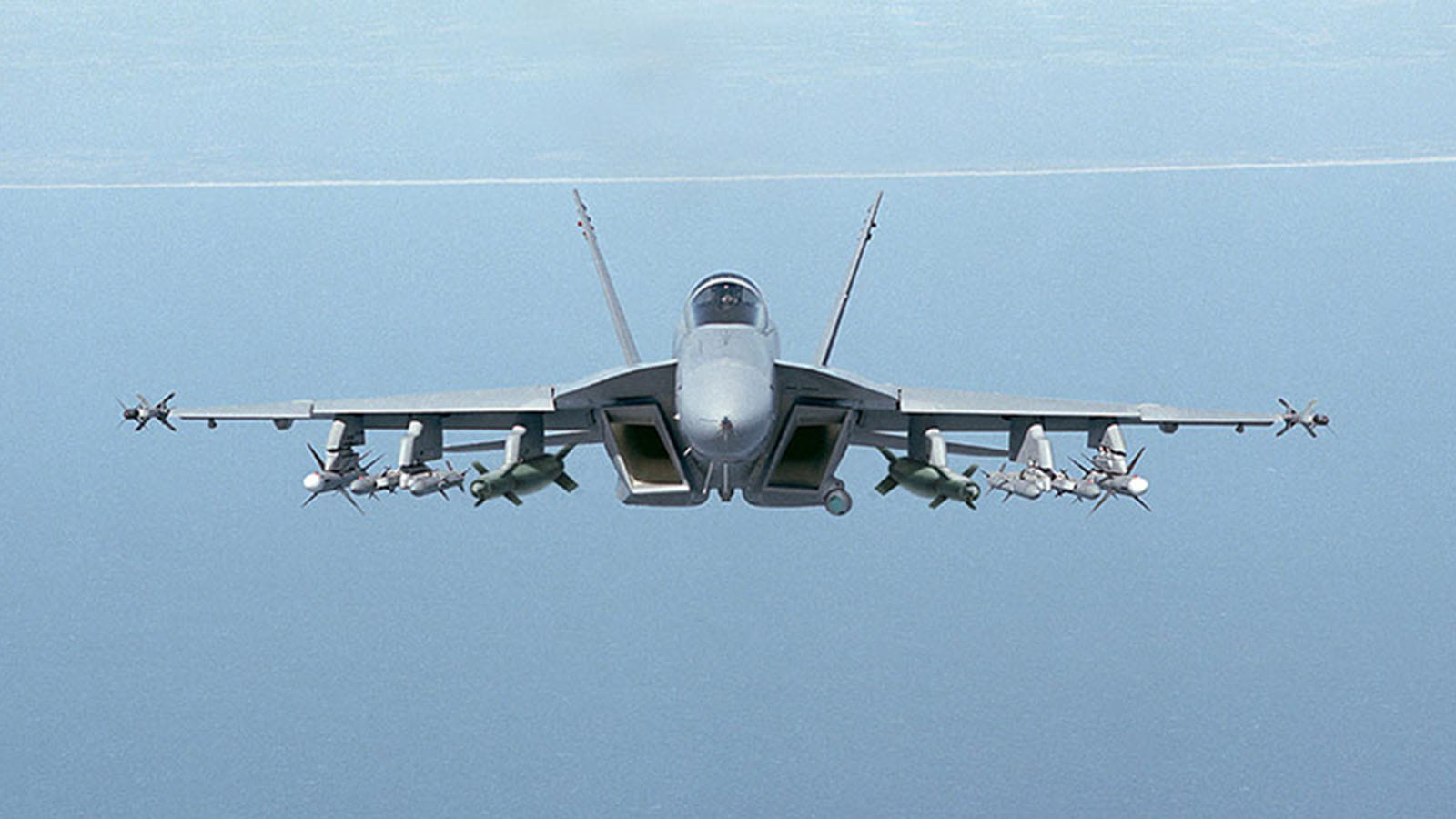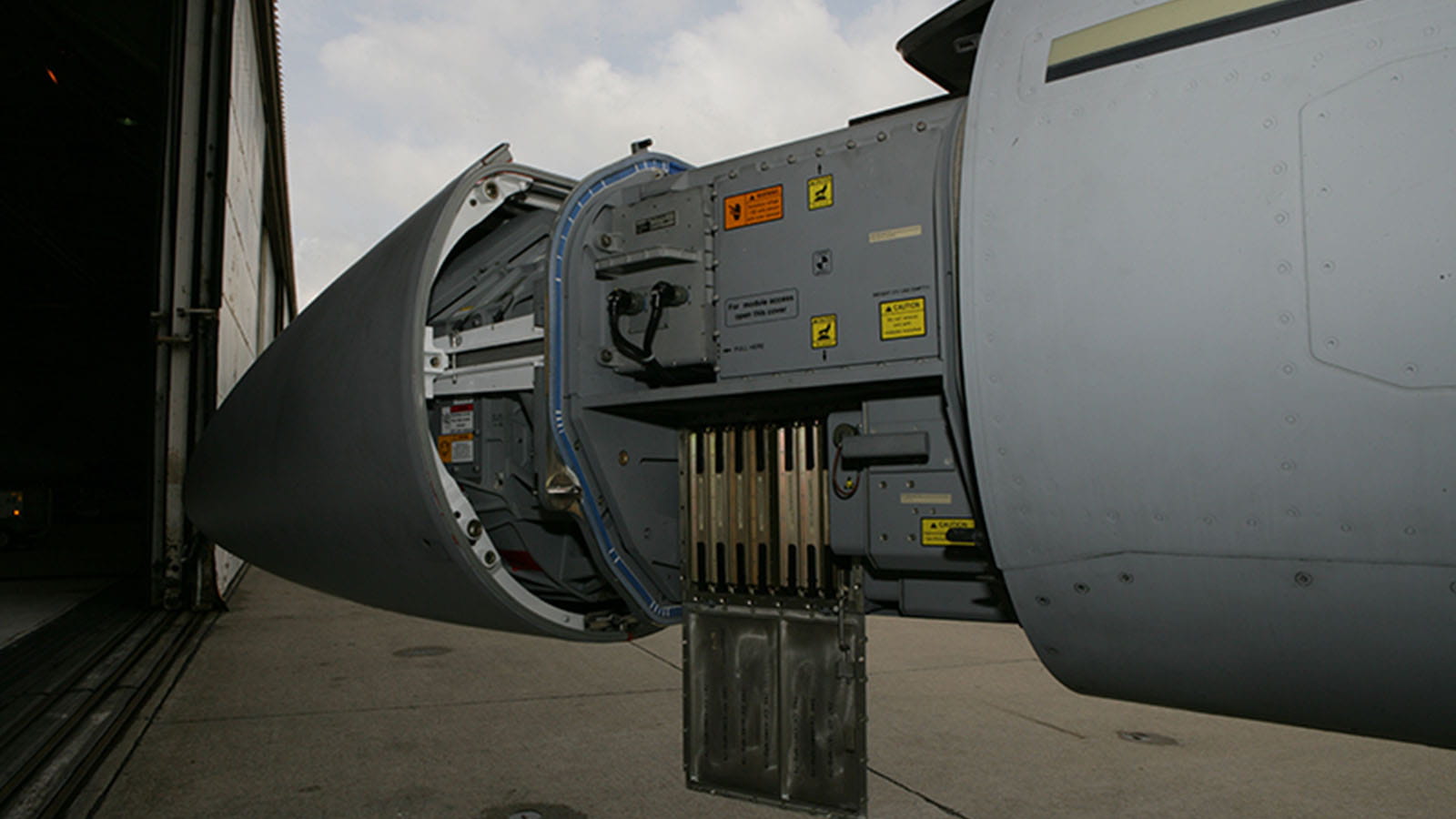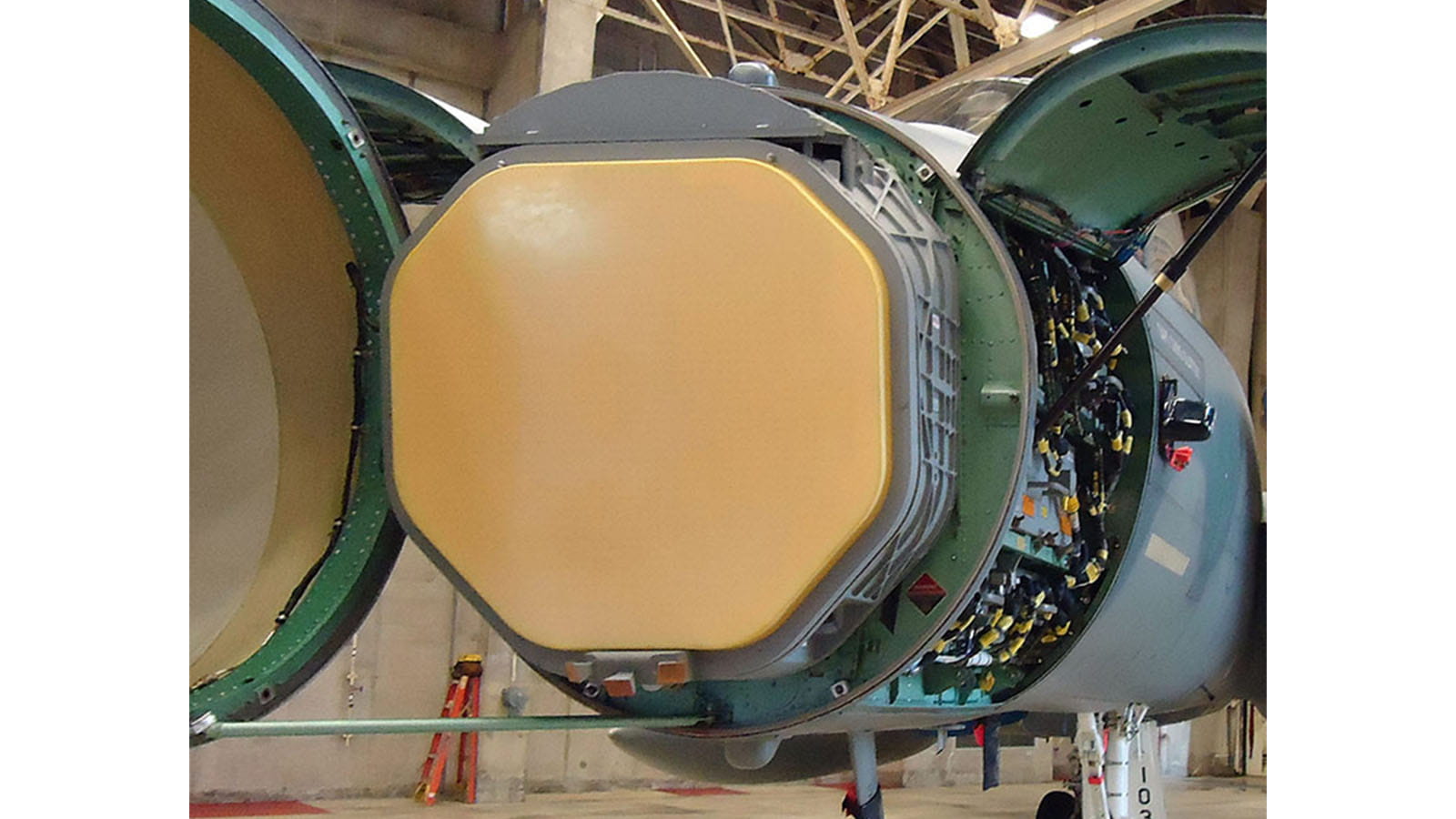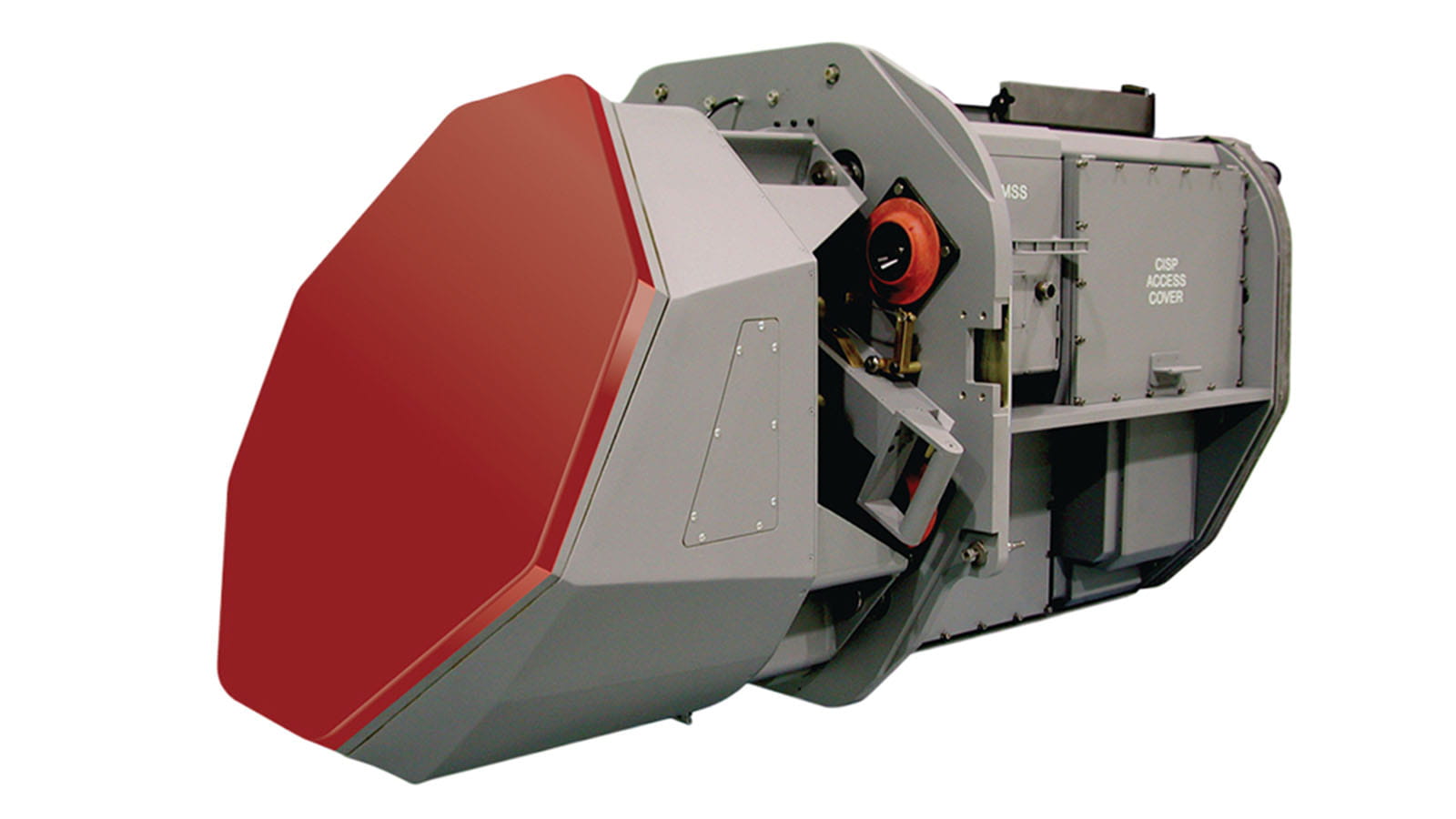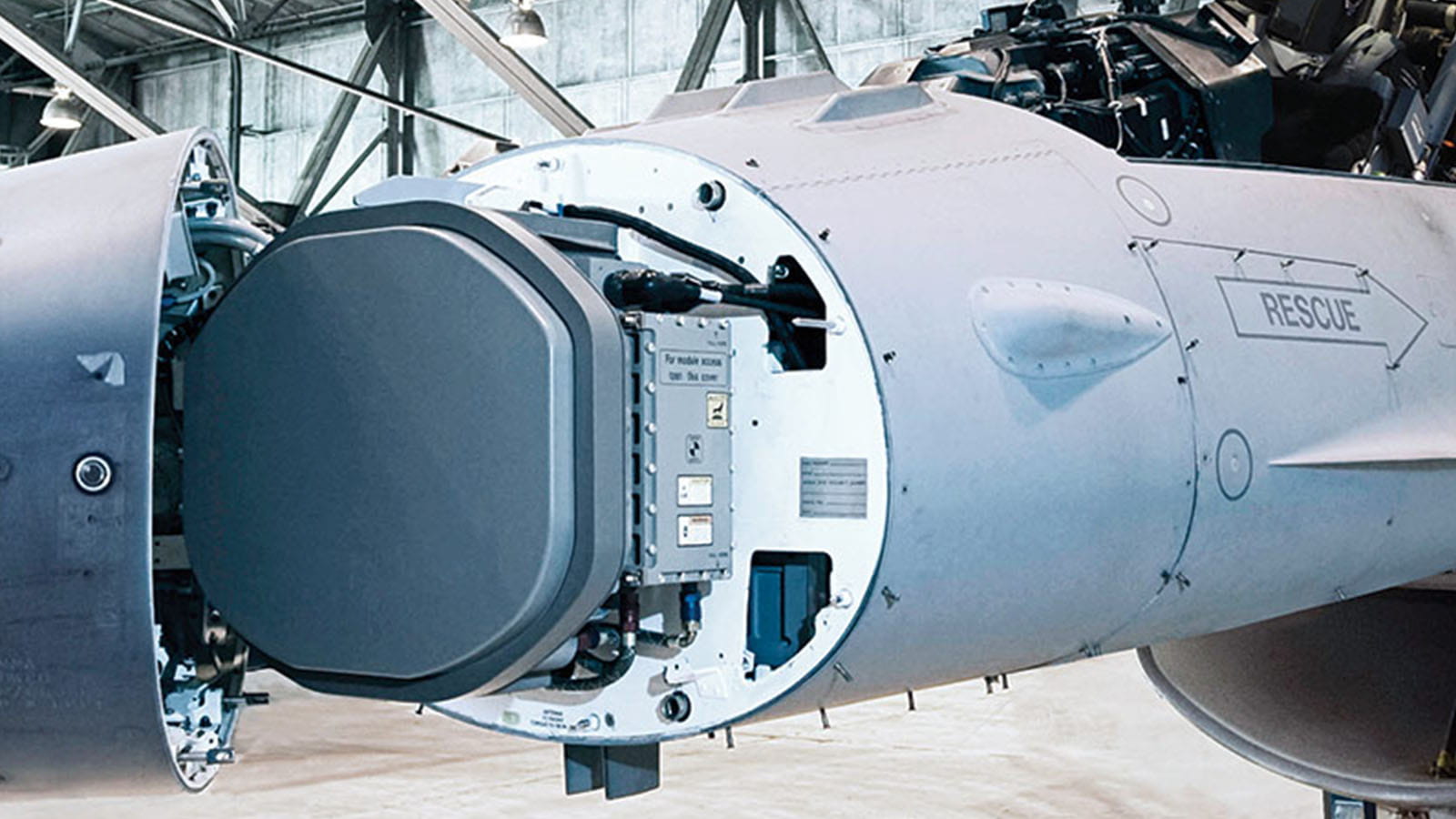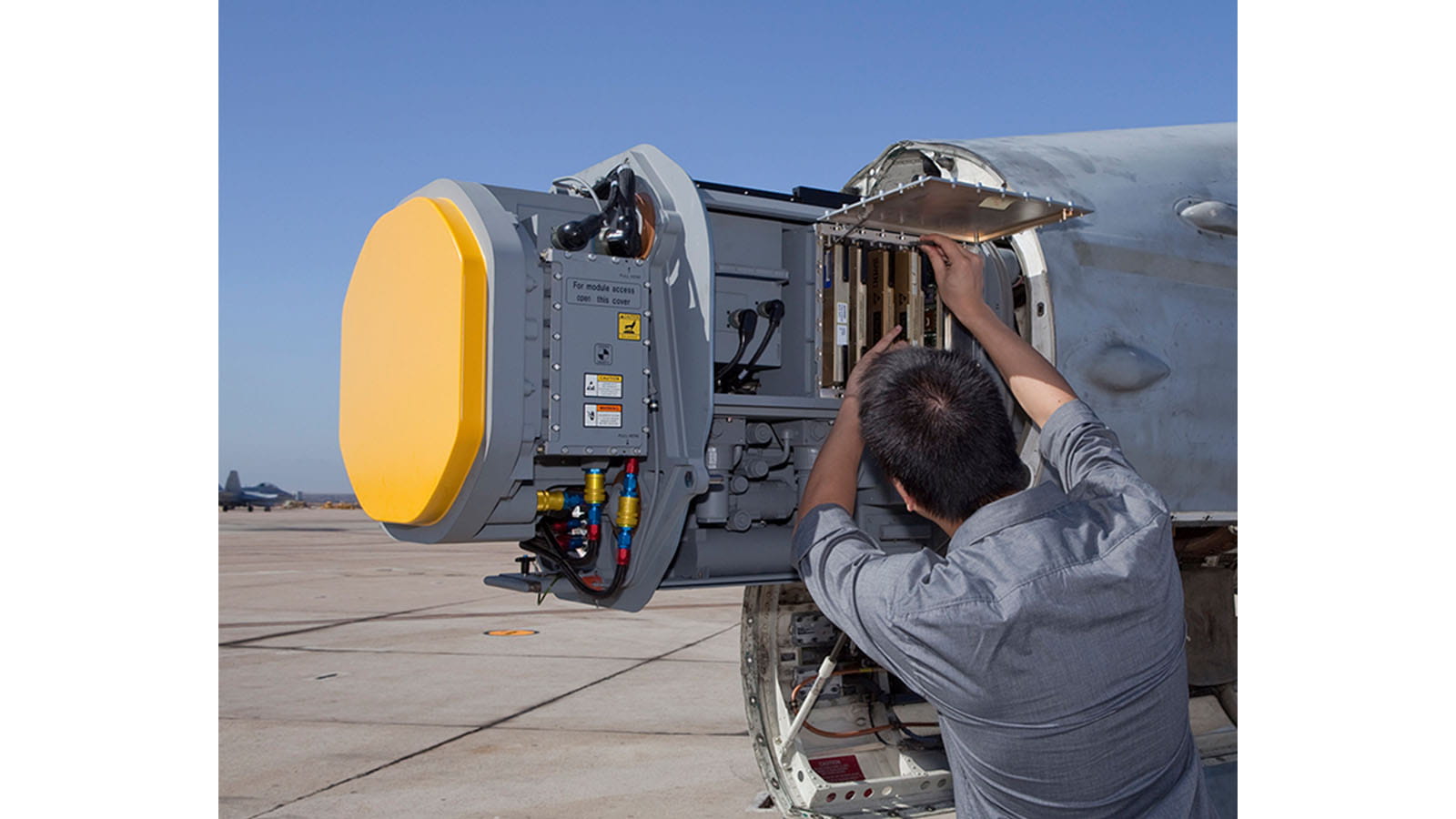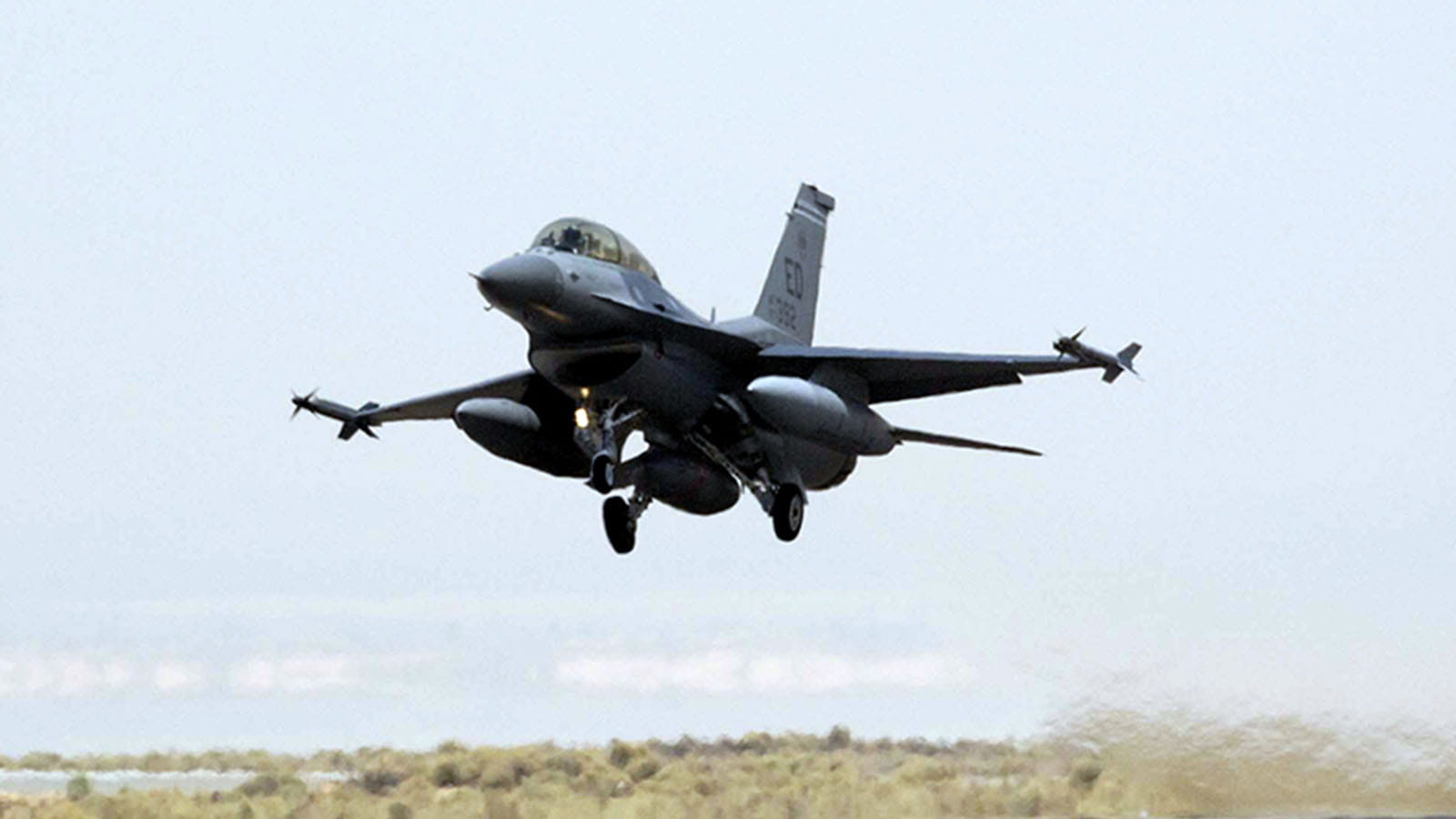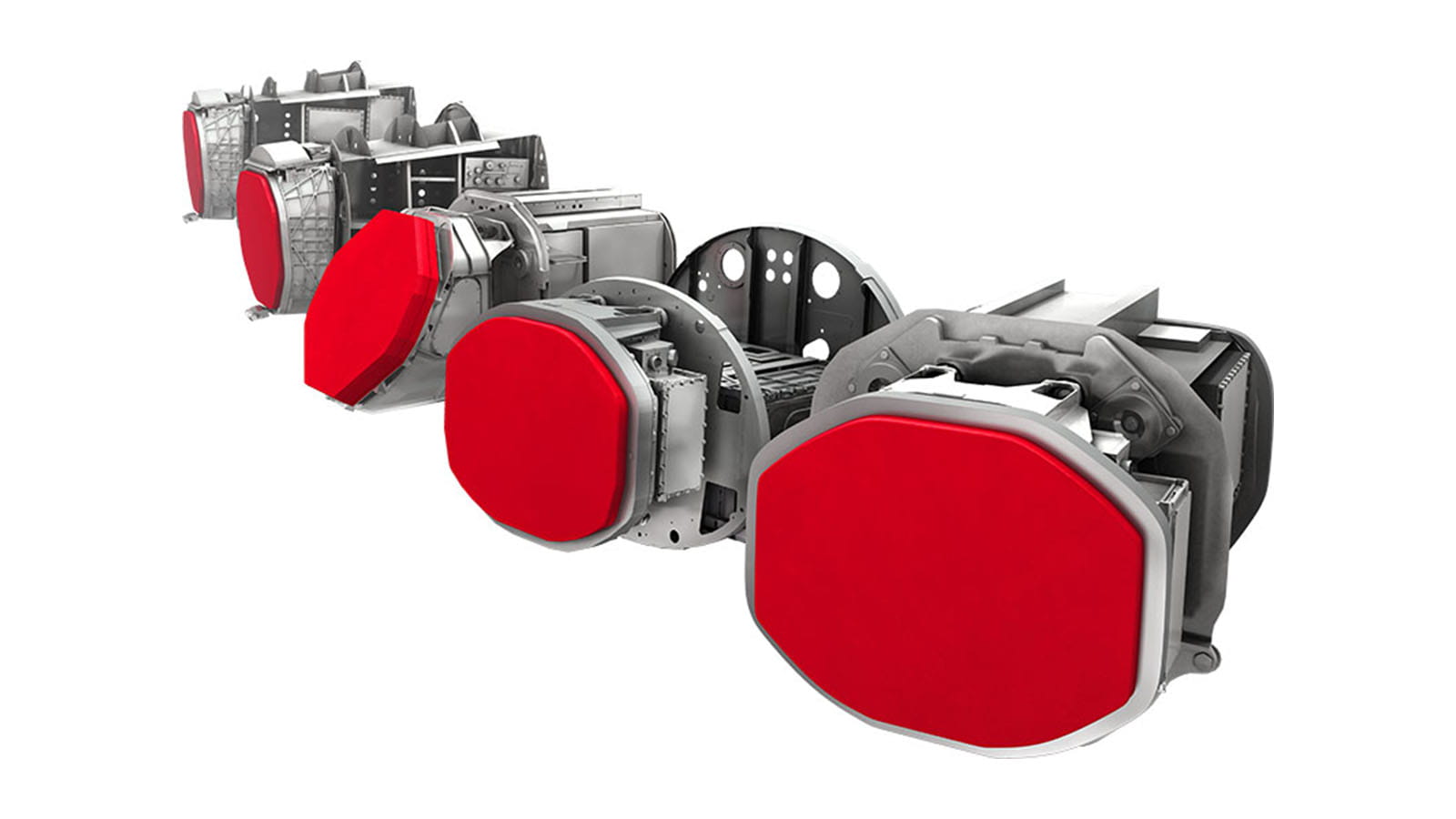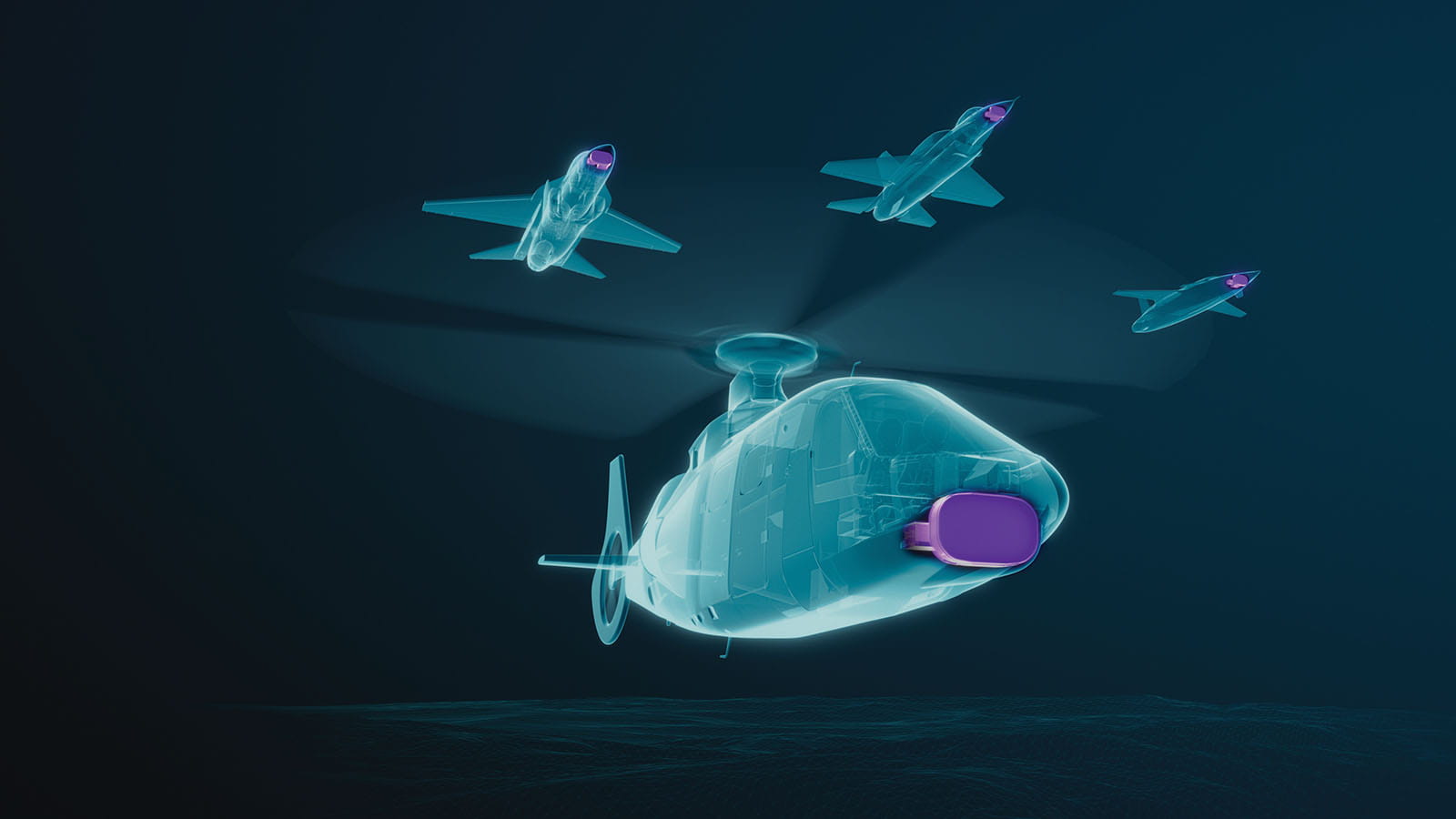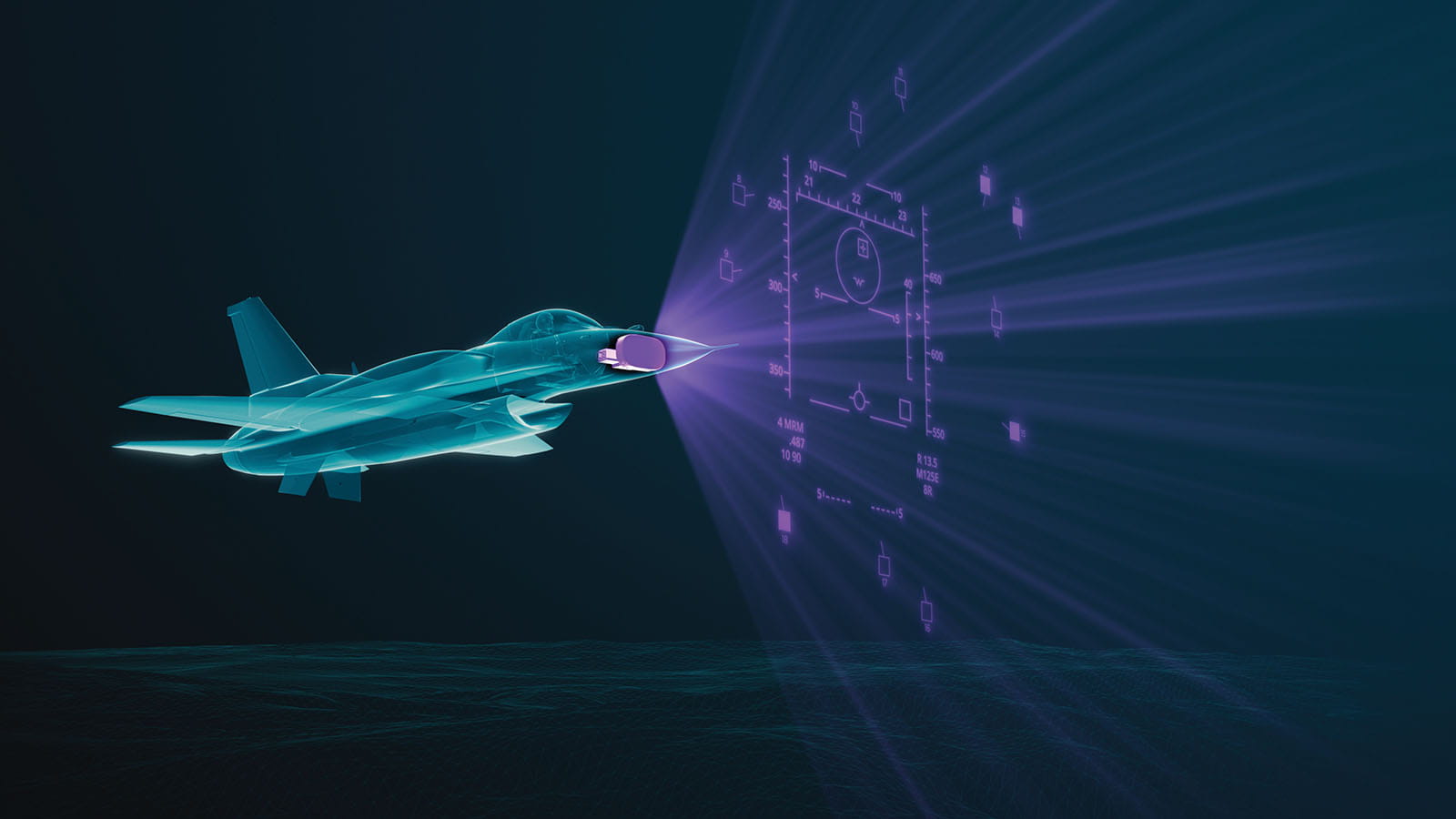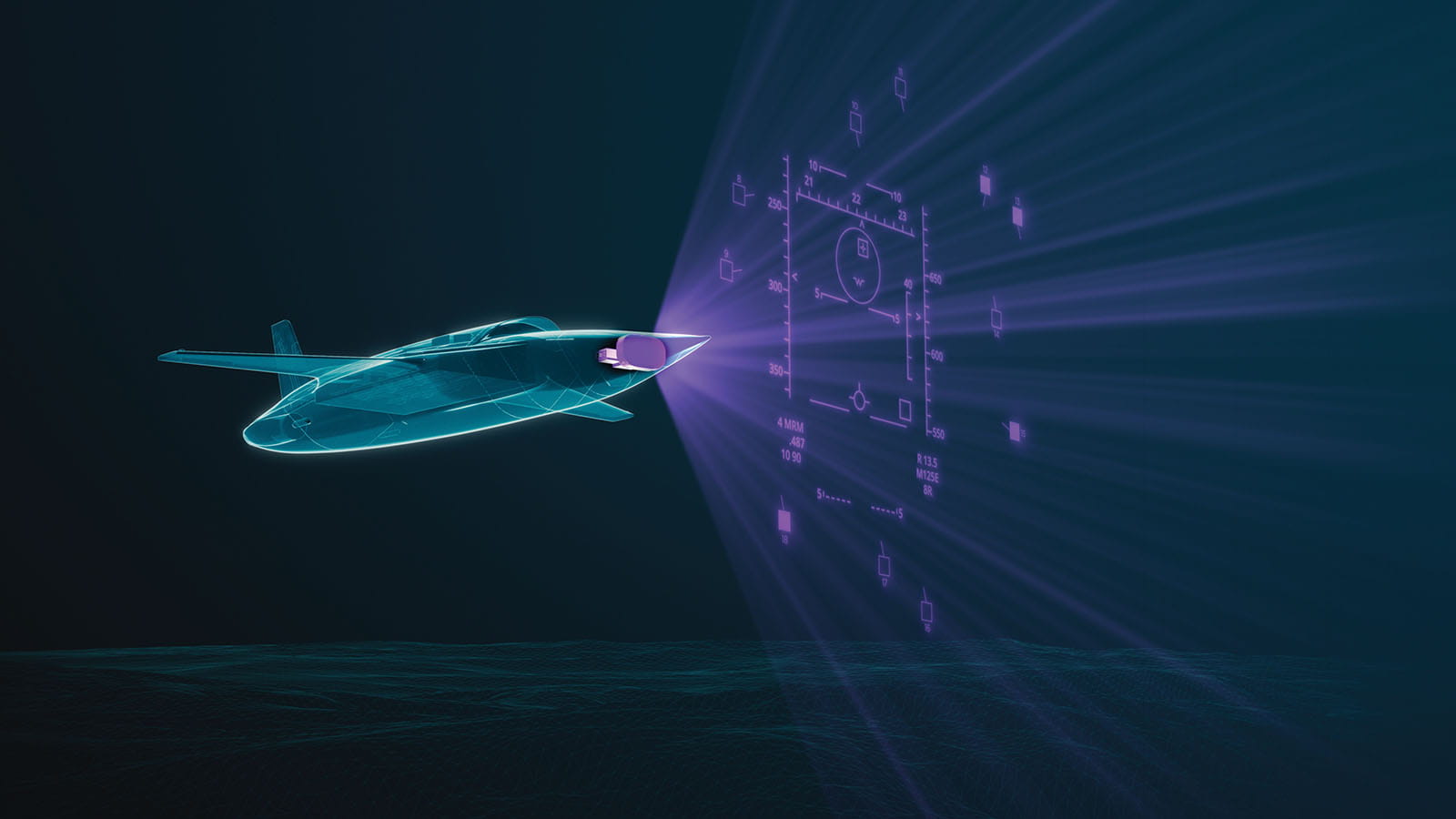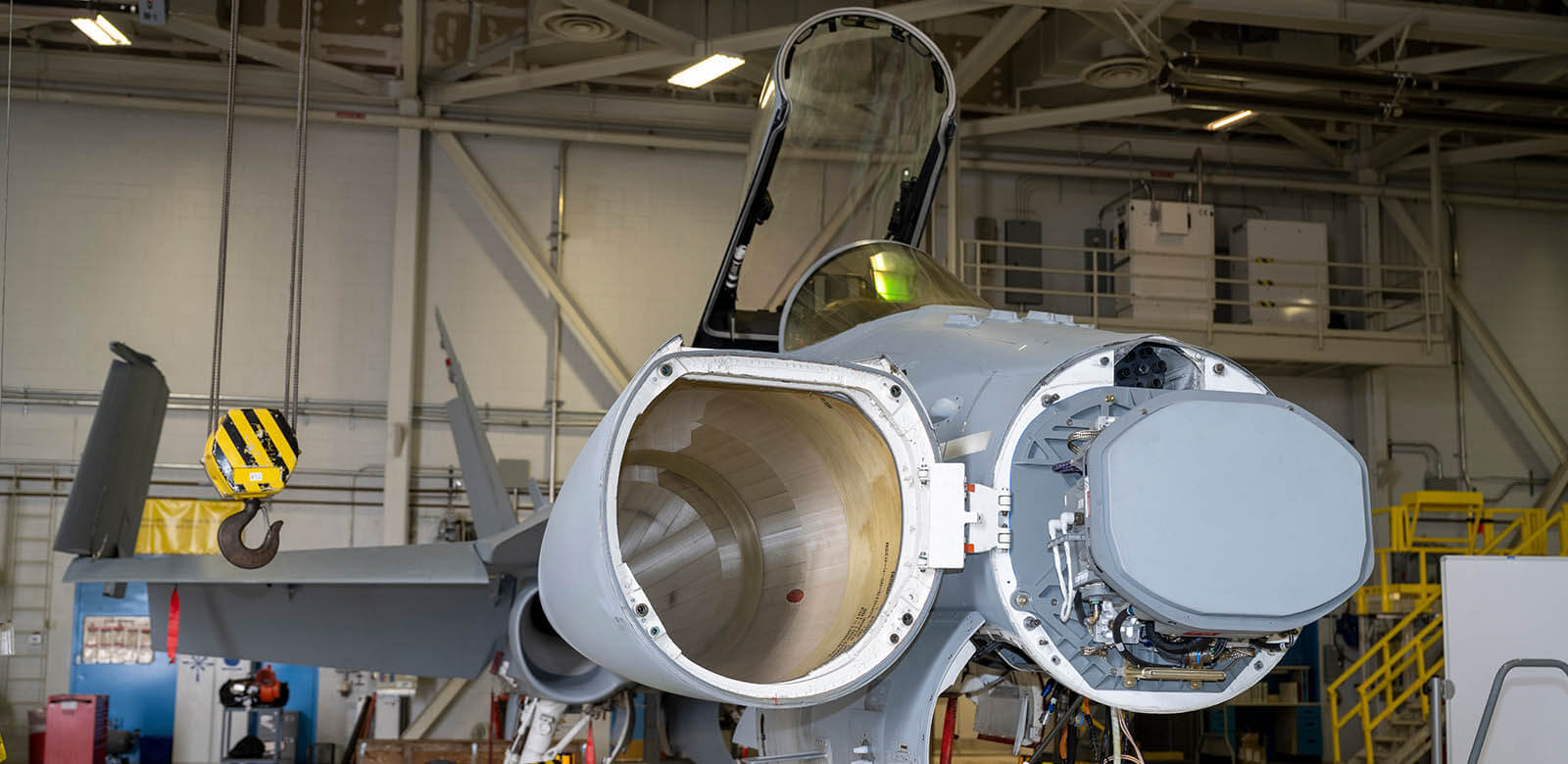
Our History
Raytheon has been at the forefront of tactical fighter radar technology since the mid-1940s. Now with over 1,000 AESA radars delivered and over a million flight hours, take a look at our decades of nonstop innovation to deliver unmatched mission success and aircrew survivability.
1940
Heritage Raytheon Company’s connection with tactical fighter radars began during World War II when aviator Howard Hughes’ new aerospace company, Hughes Aircraft Company, gained a reputation for innovation in the defense industry. Concurrently, Raytheon was developing radar technology for anti-aircraft air defenses and gun control systems for bomber aircraft. After the war, Hughes, which would later merge with Raytheon in 1997, won a contract to develop the E-1 Fire Control System for fighter aircraft—including the F-89 Scorpion and the F-94C Starfire—of the newly formed U.S. Air Force. The system used the APG-33 radar to continuously measure the range, azimuth and elevation of the identified target and allow the observer to take control if the “blip” was identified as unfriendly. By the end of the decade, Hughes had completed production on 25 such systems. Along with its work on the E-Series systems, Hughes began development on the MA-1, a fire control system that incorporated the new Falcon missiles.
1950
New conflicts in Korea and elsewhere during the 1950s demanded rapid developments in fire control radars, including increasingly automated functions such as search and “collision-course” automatic interception. Hughes’ engineers worked to improve the systems seek-out and shoot-down capabilities, adding such innovations as an artificial horizon and range trace markers to later E-Series systems. These markers displayed on the scope until the radar could lock on to the target. By the mid-1950s, Hughes was the sole source of fire control systems for the U.S. Air Force Interceptor program and radar-guided Falcon series air-to-air missiles. After WWII, Raytheon had begun development on the APG-43, a continuous wave radar used in anti-aircraft missiles. It was immune to interference from large stationary objects and slow-moving clutter. This radar was at the core of Raytheon’s Lark Missile guidance system—the first missile-mounted system capable of intercepting moving objects.
1960
After the Korean War, the Vietnam War raged against a backdrop of ongoing Cold War posturing. Hughes continued to manufacture high-performance E-Series fire control radar systems for tactical fighters in both America and Canada, including those that flew on the U.S. Navy and U.S. Marine Corps F2H-4 Banshee and the F3D Skyknight. The ASG-18 was the first Pulse Doppler radar in the U.S. This new system had look-down/shoot-down capability, an infrared search-and-track system and a range of more than 200 miles. This system was first designed for the F-111 Aardvark and tested on the “Snoopy” B-58 bomber, so called because of the shape of its reconfigured nose to fit the radar. However, after cancellation of the F-111 program, the ASG-18 was installed on the YF-12A Blackbird Interceptor.
1970
The 1970s ushered in a new era of radar technology, as tactical fighters came to rely on newly developed mechanically scanned array radars. Hughes developed the all-weather, multimode APG-63 radar in the early 1970s, which was installed on all F-15 Eagles. This radar was upgraded to the APG-70 in 1979 to incorporate the first software programmable signal processor. This upgrade allowed engineers to modify the system by reprogramming the software, rather than retrofitting the hardware—a development so significant that it distinguishes the F-15A/Bs from the C/Ds that remain in service in the U.S. Air Force and the air forces of several other countries. Other radar advancements during the ’70s included velocity search, range-while-search capabilities, track-while-scan, and single target track operating modes.
1980
Advancements with radar technology continued to progress set against the backdrop of late stages of the Cold War. With the latest advancements still making waves, Hughes and Raytheon launched a new round of radar designs that incorporated gate array technology with additional modes, enhanced operational capabilities and greater reliability. Similar to the APG-63, the APG-65 was developed for the U.S. Navy’s F/A-18 Hornet, the McDonnell Douglas AV-8B Harrier II and the Douglas F-4 Phantom. The AWG-9 and APG-71 fire control systems offered a complete all-weather, multimode digital radar system for the Grumman F-14 Tomcat. This new system improved not only the digital processing speed of previous radars but also the mode flexibility and detection range, and it proved less vulnerable to jamming. In the late ’80s, Hughes engineers upgraded existing radars to incorporate the JOVIAL programming language, allowing them to adapt software written for earlier radars. They also improved the motion-sensing subsystem and stretch waveform generator resulting in higher-resolution ground maps.
1990
By the 1990s, Hughes and Raytheon were seen as the leaders in tactical fighter radar development and production. New hardware designs for the APG-63 radar were introduced, increased its reliability tenfold – allowing it to track 14 targets simultaneously. The APQ-180—a modified APG-70—saw improvements to its gambling scheme for the planar array and incorporated new air-to-ground modes. The new and improved radar was soon installed on the AC-130 gunship – that saw extensive service during Desert Storm, as well as in Somalia, Haiti and the Balkans. The end of the decade also officially brought Hughes and Raytheon together.
2000
The new millennium brought with it substantial advancements in tactical fighter radars, but also America’s engagement in combating a war on terror. —Active Electronically Scanned Arrays were introduced and quickly replaced older mechanical scanning technology. Raytheon first implemented the new AESA technology to existing APG-63 radars, allowing pilots in the retrofitted F-15C Eagle and other fighters to take advantage of the latest tracking capabilities and situational awareness. The second iteration, or (V)2 of the APG-63 took its first flight in December 2000 from Elmendorf Air Force Base, Alaska.
Seeing the success of a first operational AESA at the outset of 2000, Raytheon engineers pioneered the development of a more advanced radar – the APG-82 for F-15E Eagles–- bringing additional capability to the U.S. Air Force’s F-15 fleet. The APG-82(V)1 implemented a longer standoff range, as well as simultaneous detect, identify and track capabilities. Raytheon also introduced the APG-79 radar as a replacement to the APG-73, outfitted on the U.S. Navy’s F/A-18 Hornet. This radar incorporated the newly developed AESA technology for Eagles. It allowed the pilot to steer the radar beam at nearly the speed of light – optimizing their situational awareness. This proved to be a vital capability for F/A-18 E/F Super Hornet and EA-18G Growler aircrafts during missions over Afghanistan and Iraq.
2010
Delivering the 500th AESA radar system served as inspiration for continued maturation of tactical fighter radar technology throughout the ’10s. Raytheon focused on increasing the effectiveness, reliability and application of the technology to multirole aircraft. This was achieved through the introduction of Gallium Nitrade, or GaN, into the array and use of commercial off-the-shelf parts that drove down costs, but still enabling pilots to continue to see further and clearer. This decade also saw a continued focus of combatting global terrorism, prompting the development of advanced combat radars for global fighter aircraft. Raytheon wove in upgrades that included extended detection ranges and simultaneous air-to-air and air-to-ground capabilities. The upgraded radar capabilities helped allied countries extend the tactical relevance of their existing F-16 Falcons, F/A-18 C/D Hornets and other aircraft, in a time of reduced defense spending.
2020
Despite the war on terror concluding and the emergence of a strategic power competition – the drive to grow and advance radar technology for the future has continued. Under the new merged entities of Raytheon Company and United Technologies Corporation – Raytheon debuted a whole new class of AESA radars. Revolutionary in its concept and at half the size and cost of Raytheon’s APG-82 and 79 radars, weighing under 100 pounds, PhantomStrike is paving the way for AESA radars to be more than just a tactical fighter aircraft radar. The advent of the ’20s have also seen the continuation and increase of sales to allied countries, bringing advanced AESA capabilities to their fleets of F/A-18 Super Hornets, B-52 Stratofortresses, F-15E Eagles and EA-18G Growlers. The successful design, development, and production of the U.S. Marine Corps and Canadian APG-79(V)4 GaN AESA radar and the B-52 Bomber Modernization Radar System, BMRS, will help provide continued lethality and survivability to the Hornet and Stratofortress into the 2030s and 2050s respectively. Additionally, radar technology advancements for the F/A-18 E/F Super Hornet and EA-18G Growler will help ensure Navy Carrier Air Wings can maintain their competitive advantage against potential adversaries while simultaneously advancing capabilities for next generation platforms.
Black and white images are from the Hughes Aircraft Company historical photo archives.
Boeing F/A-18 Super Hornet photo in decade 2000 courtesy of Boeing Company.
Use of U.S. Department of War (DoW) visual information does not imply or constitute DoW endorsement.
All other images RTX.
Our AESA Radars

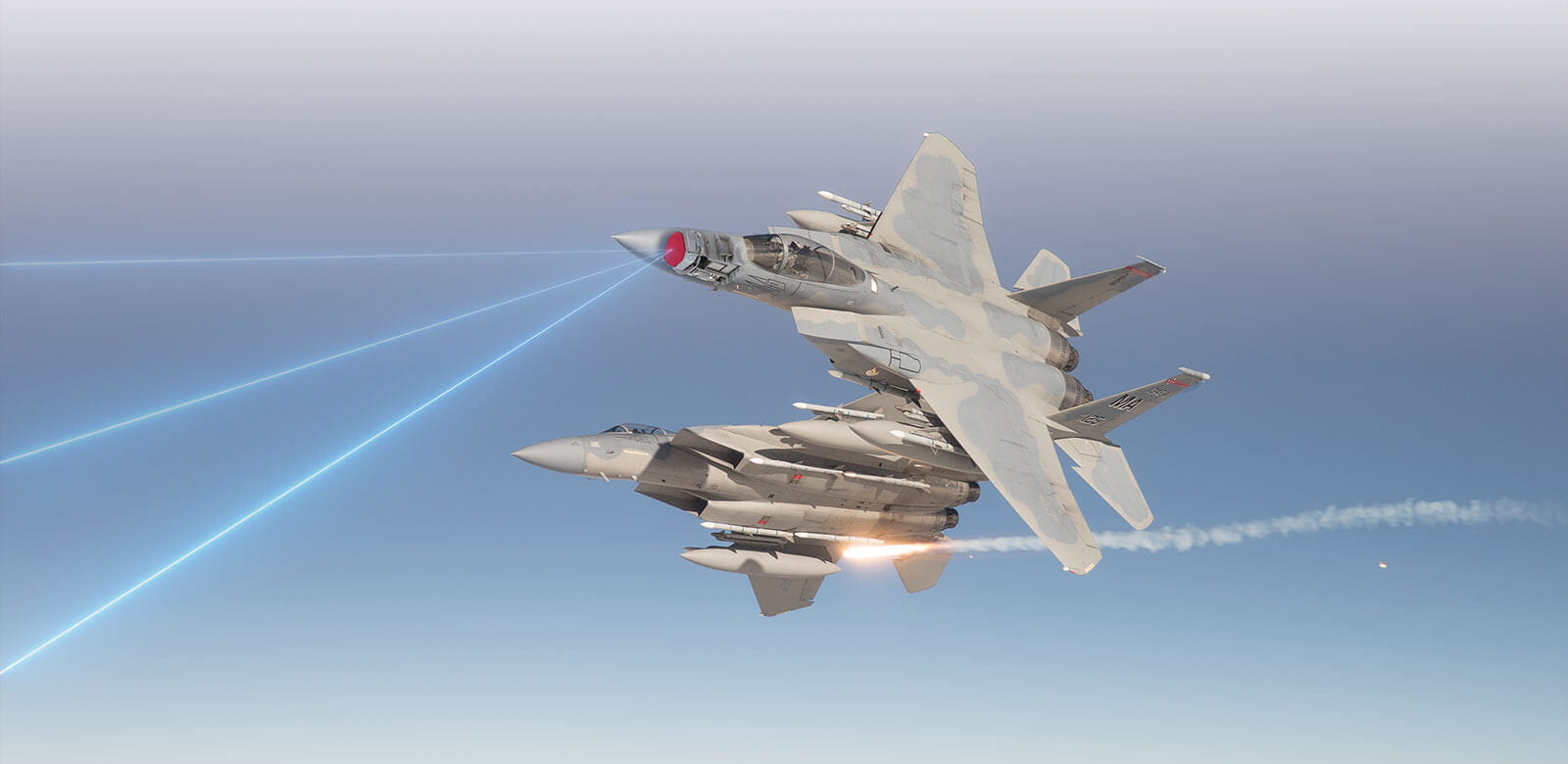
APG-82
